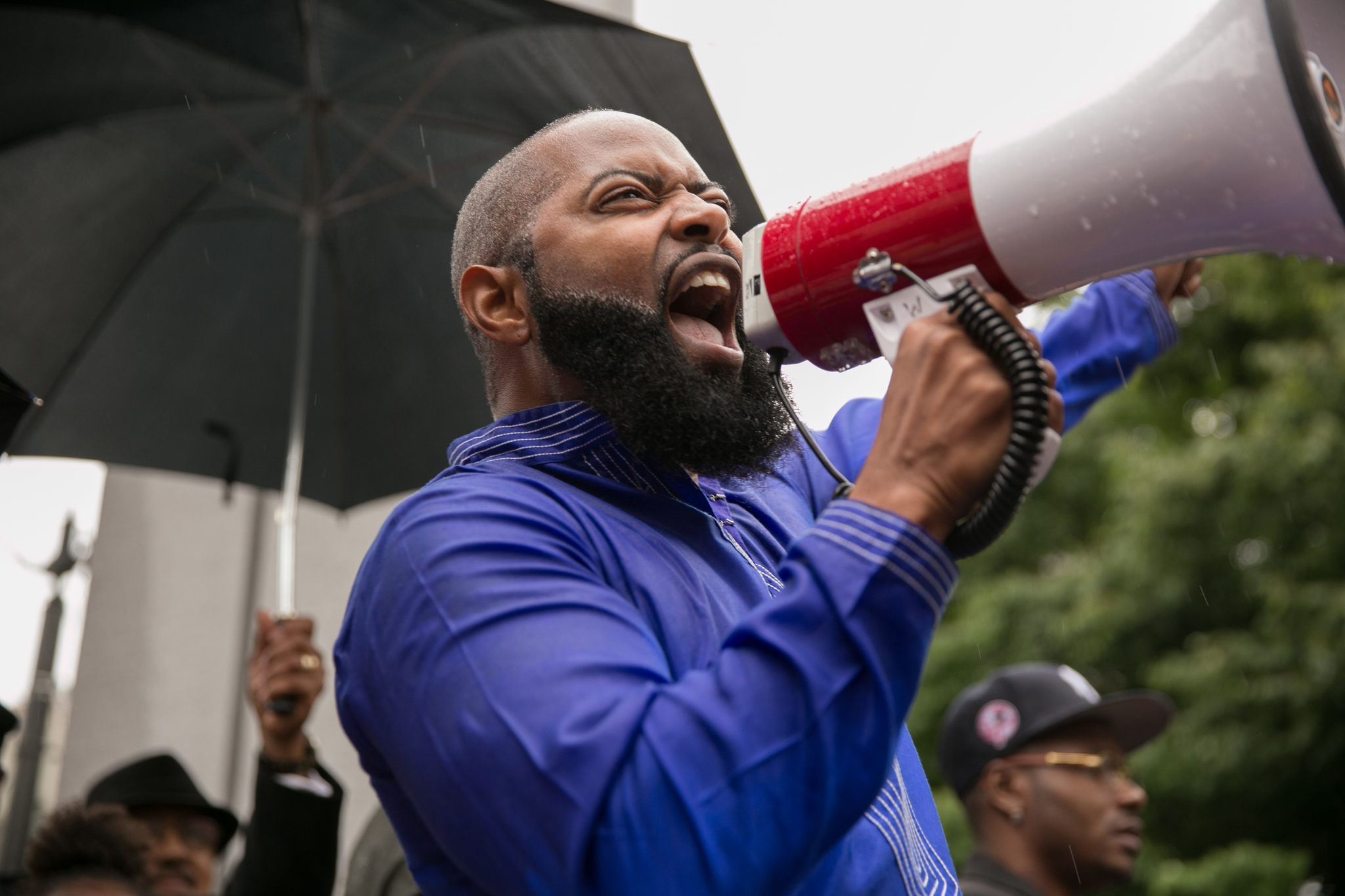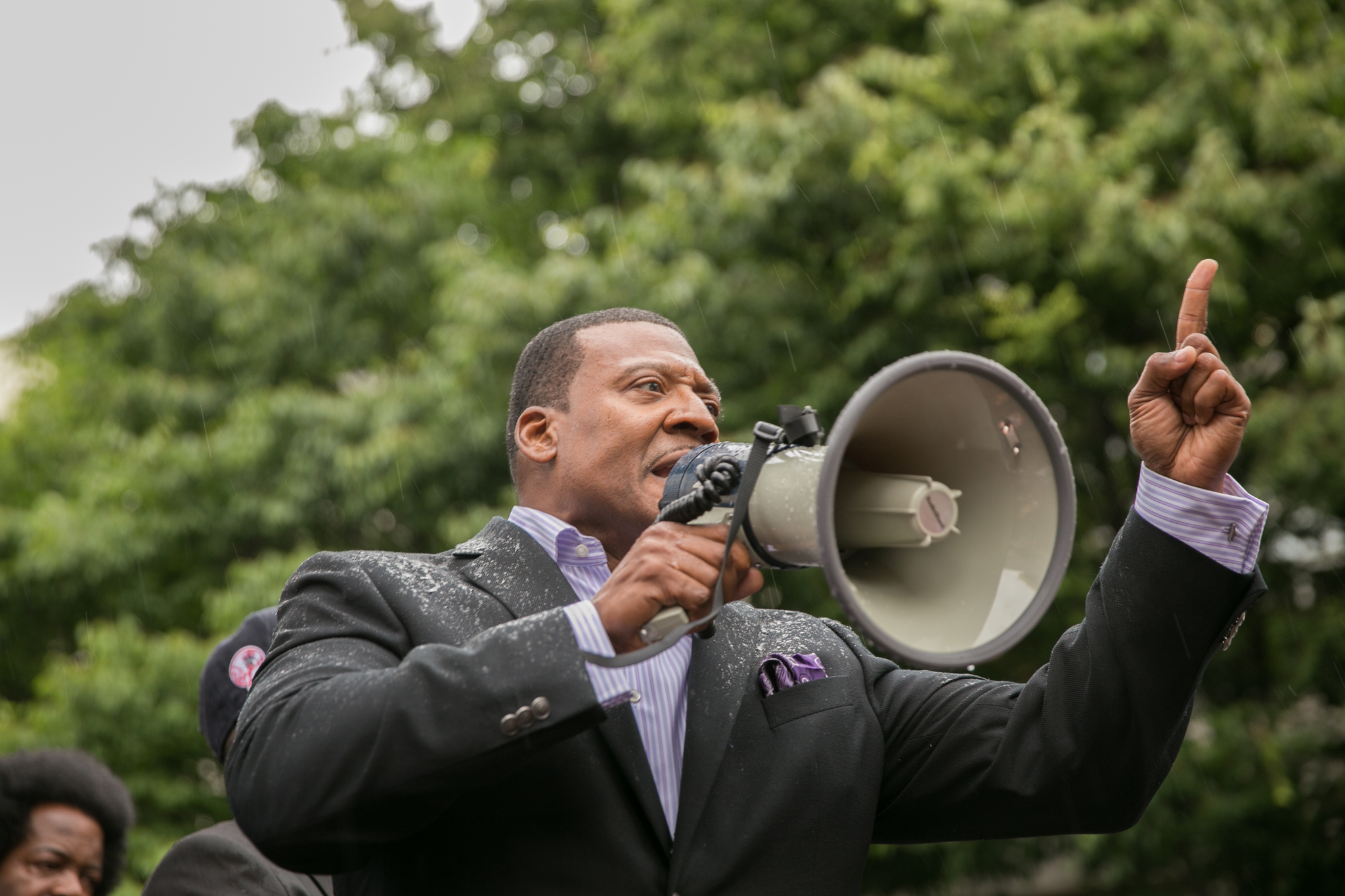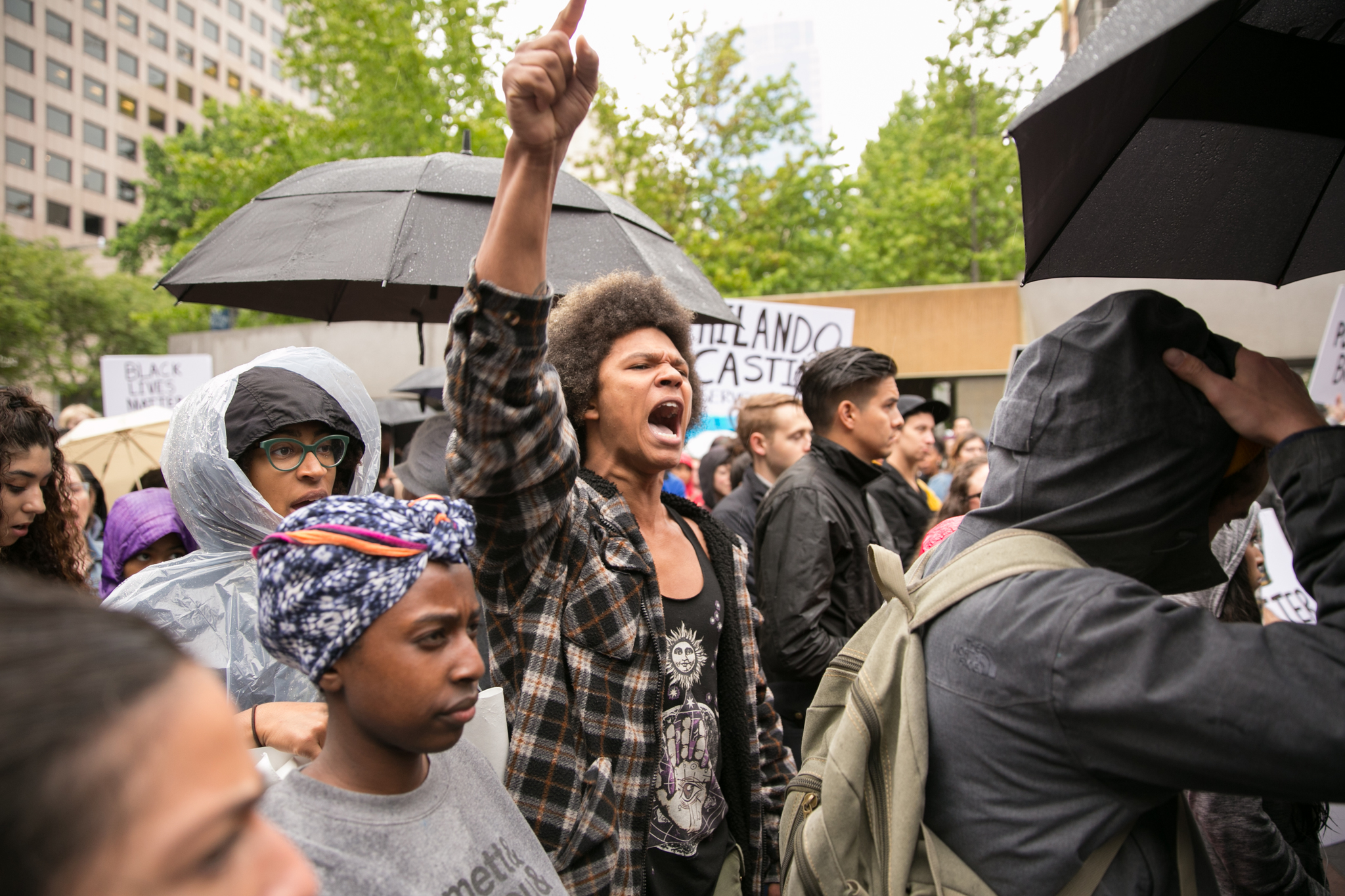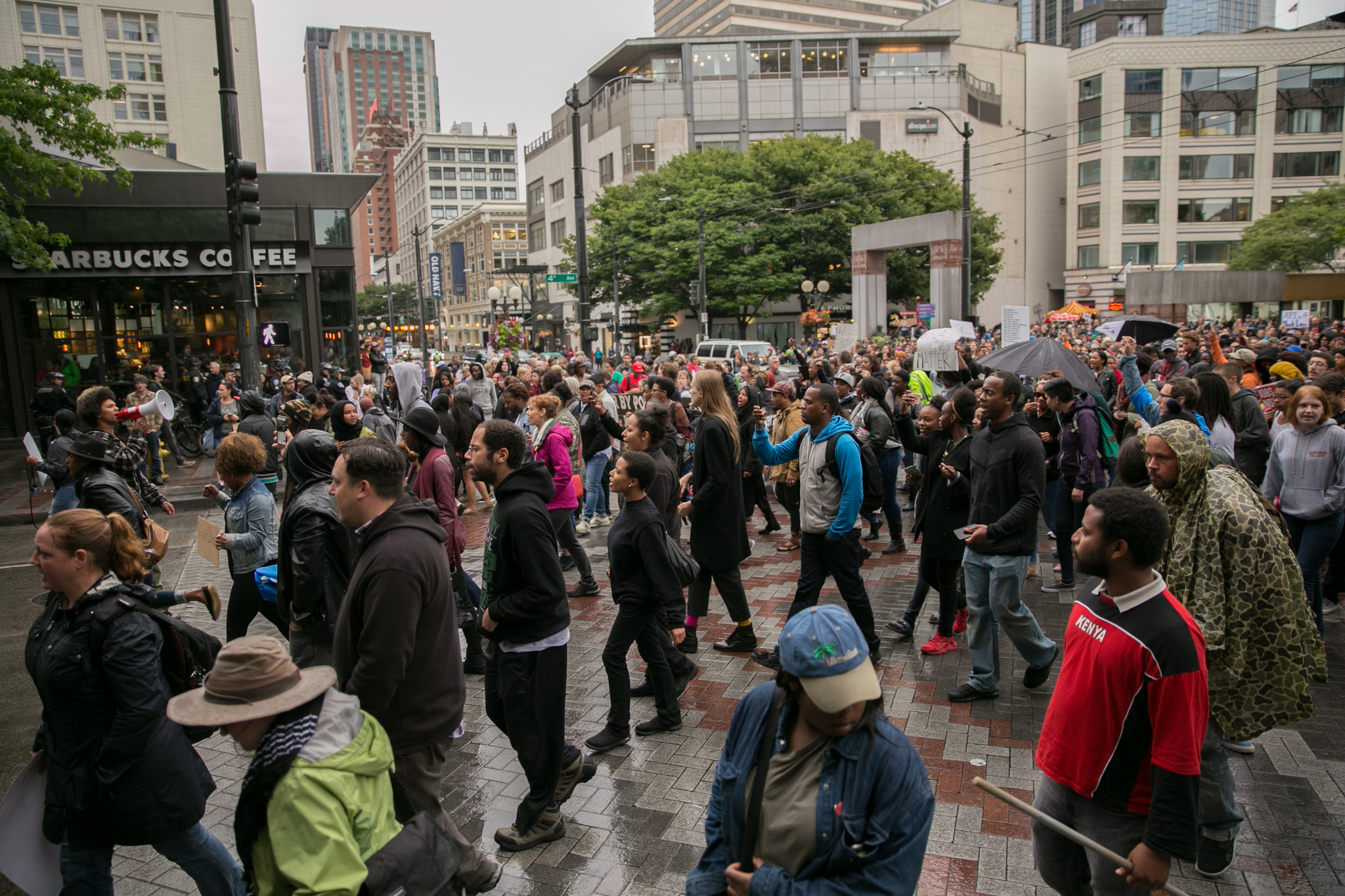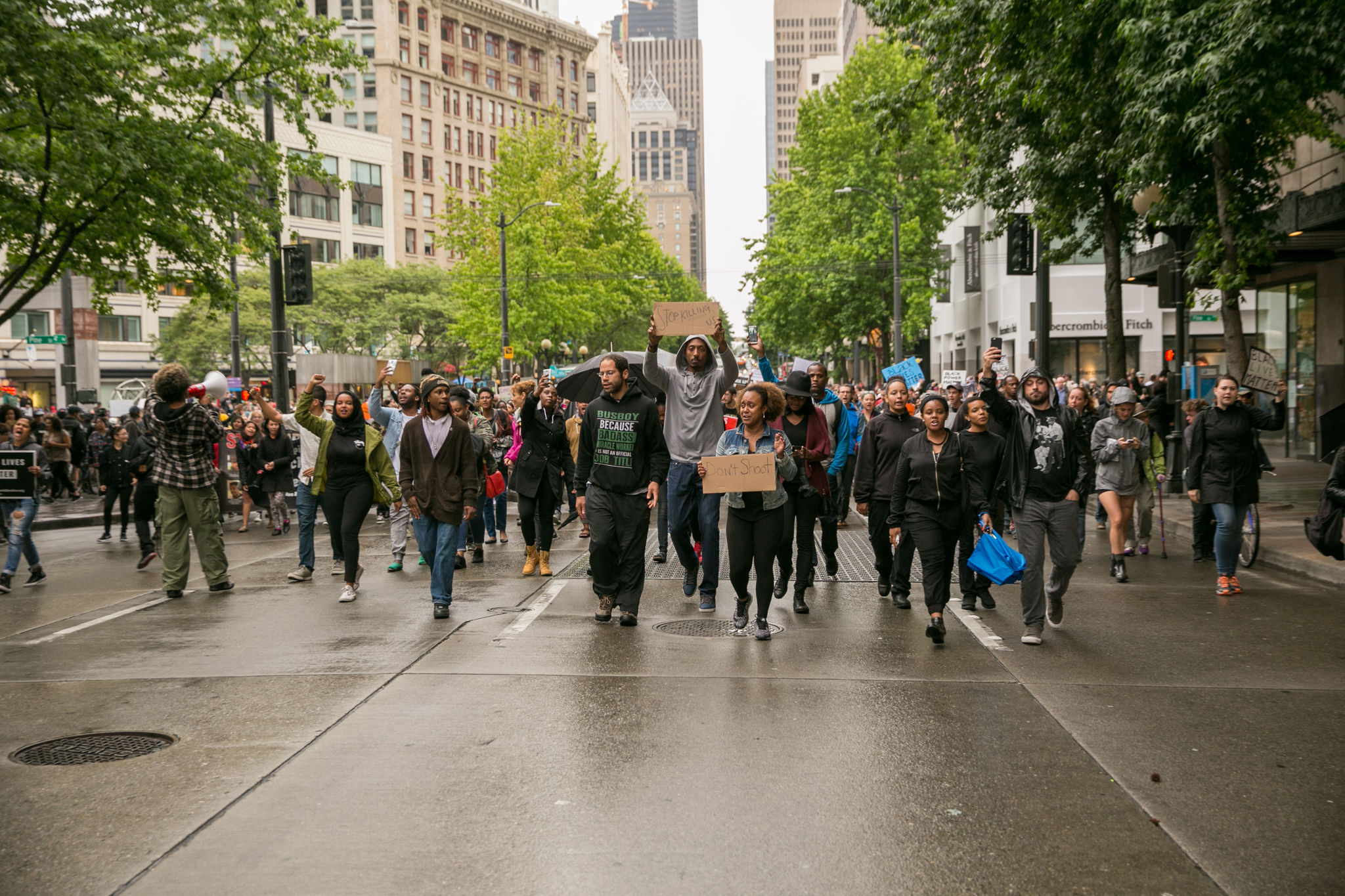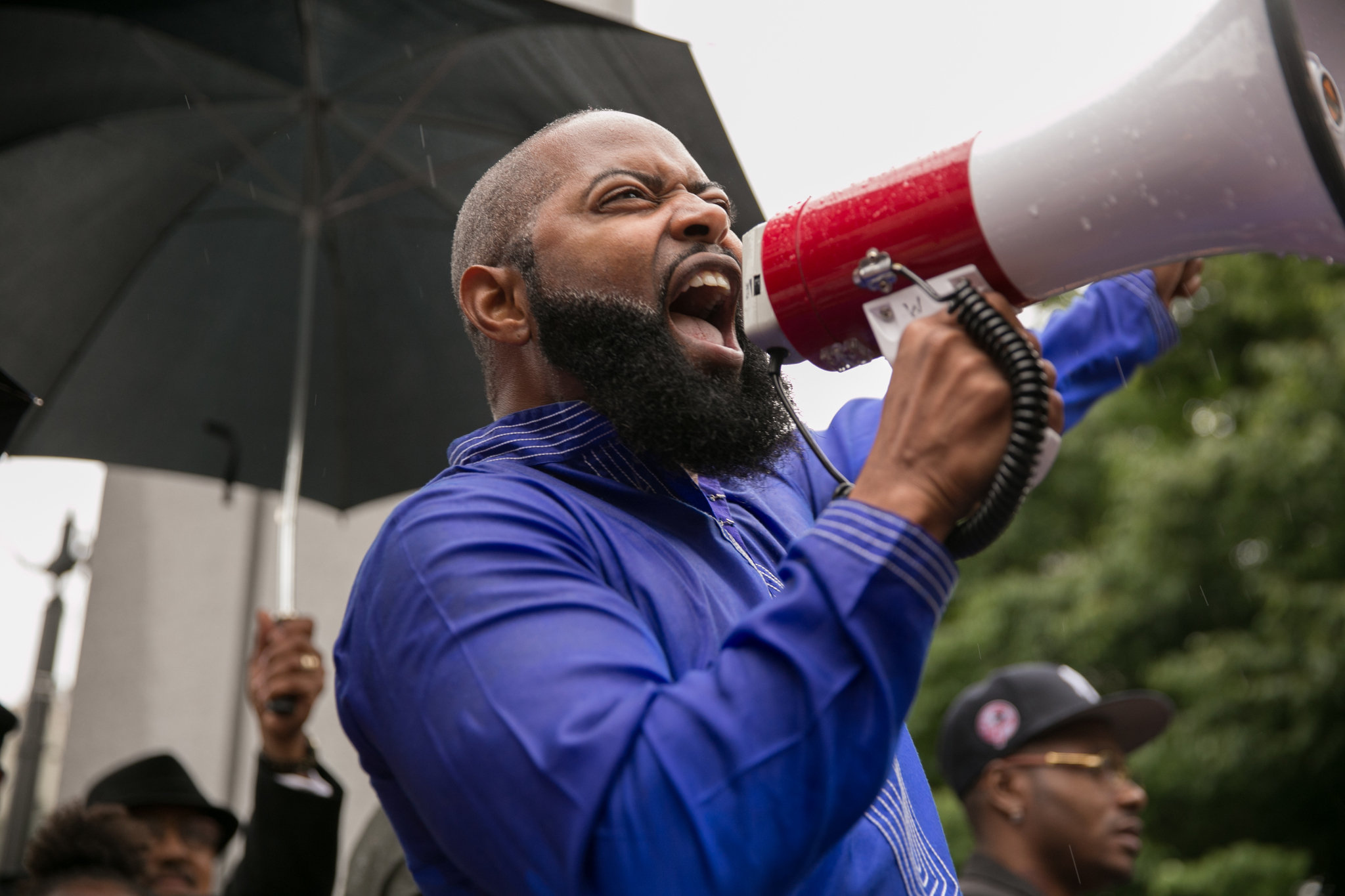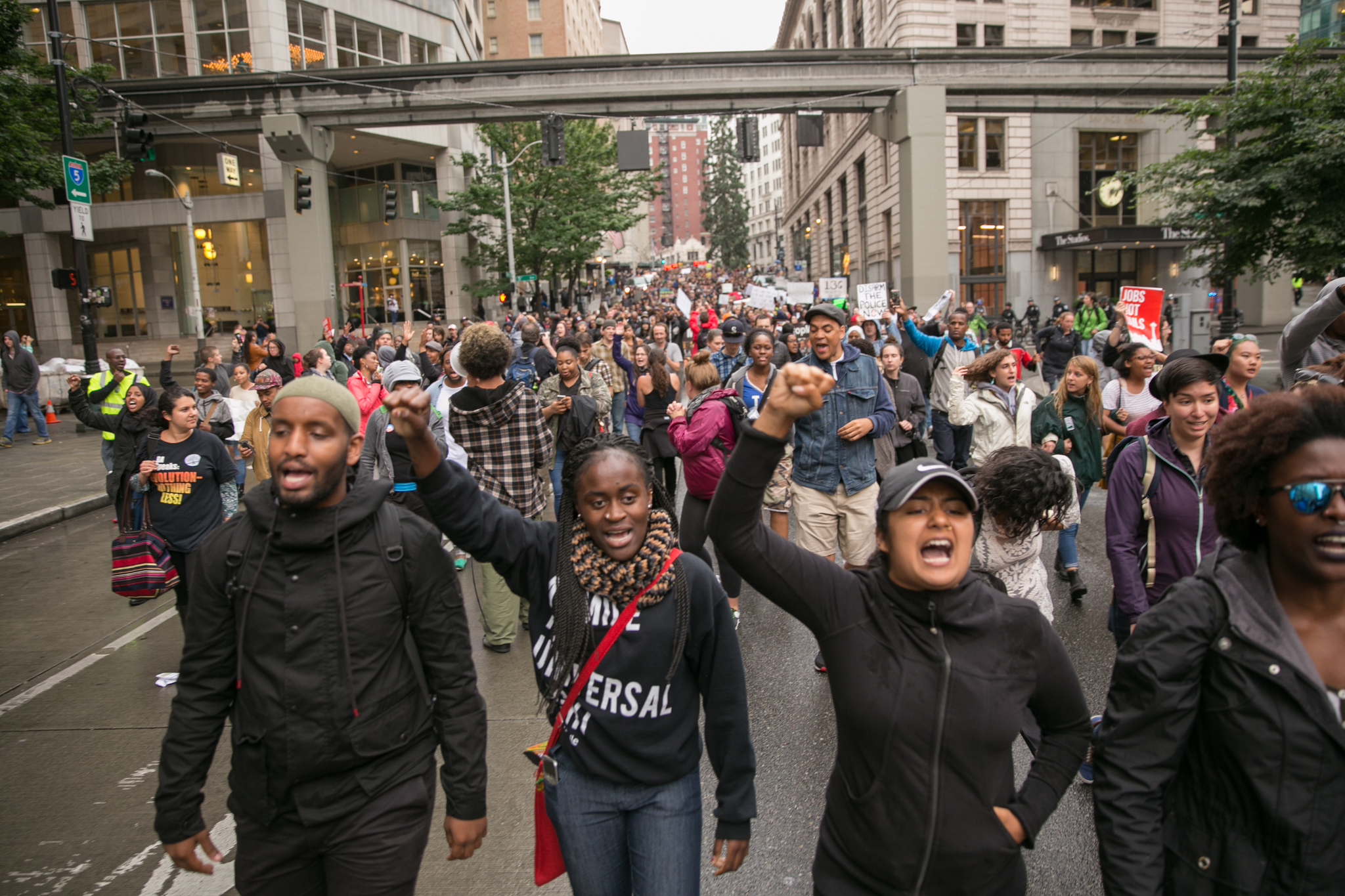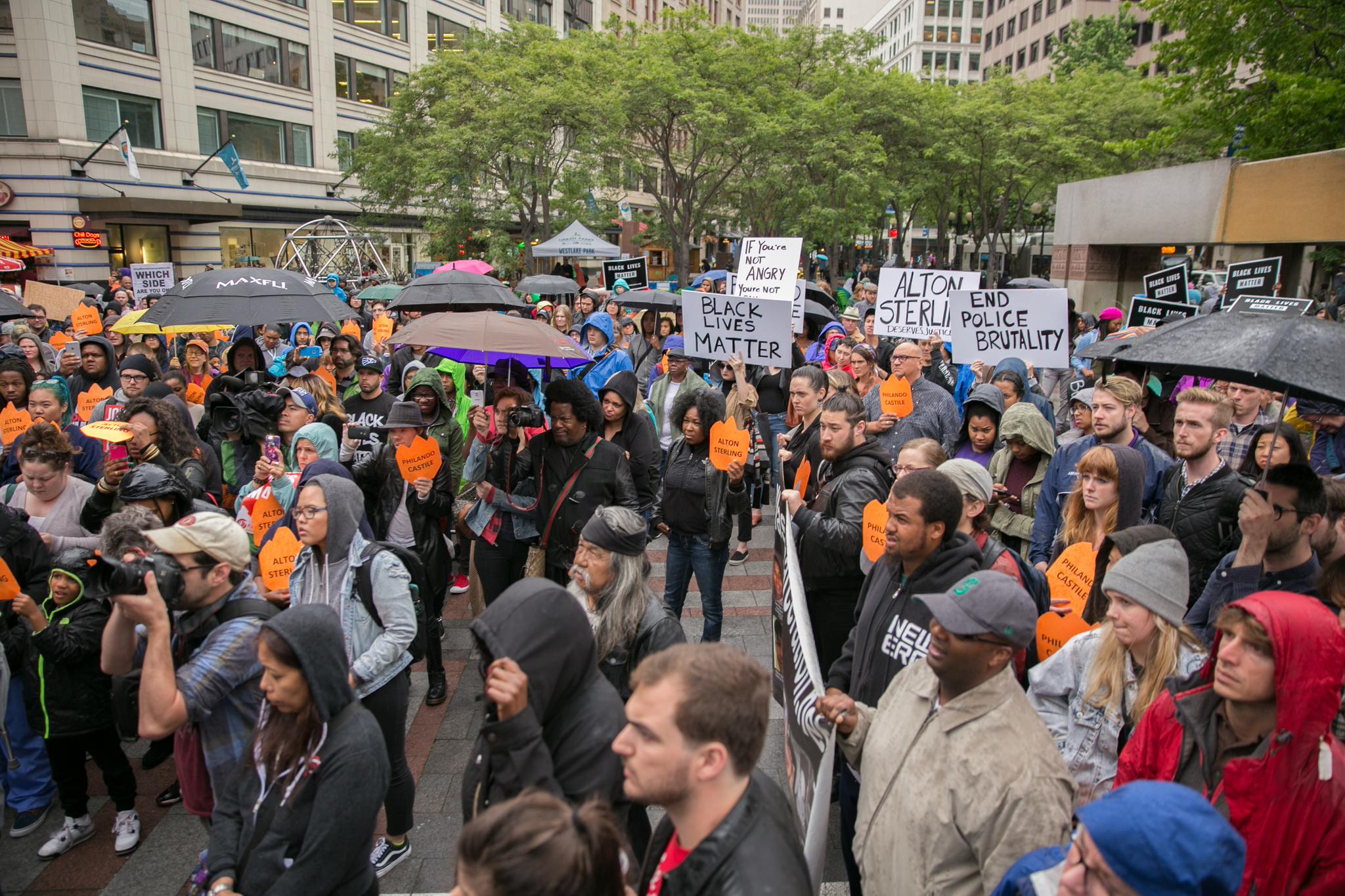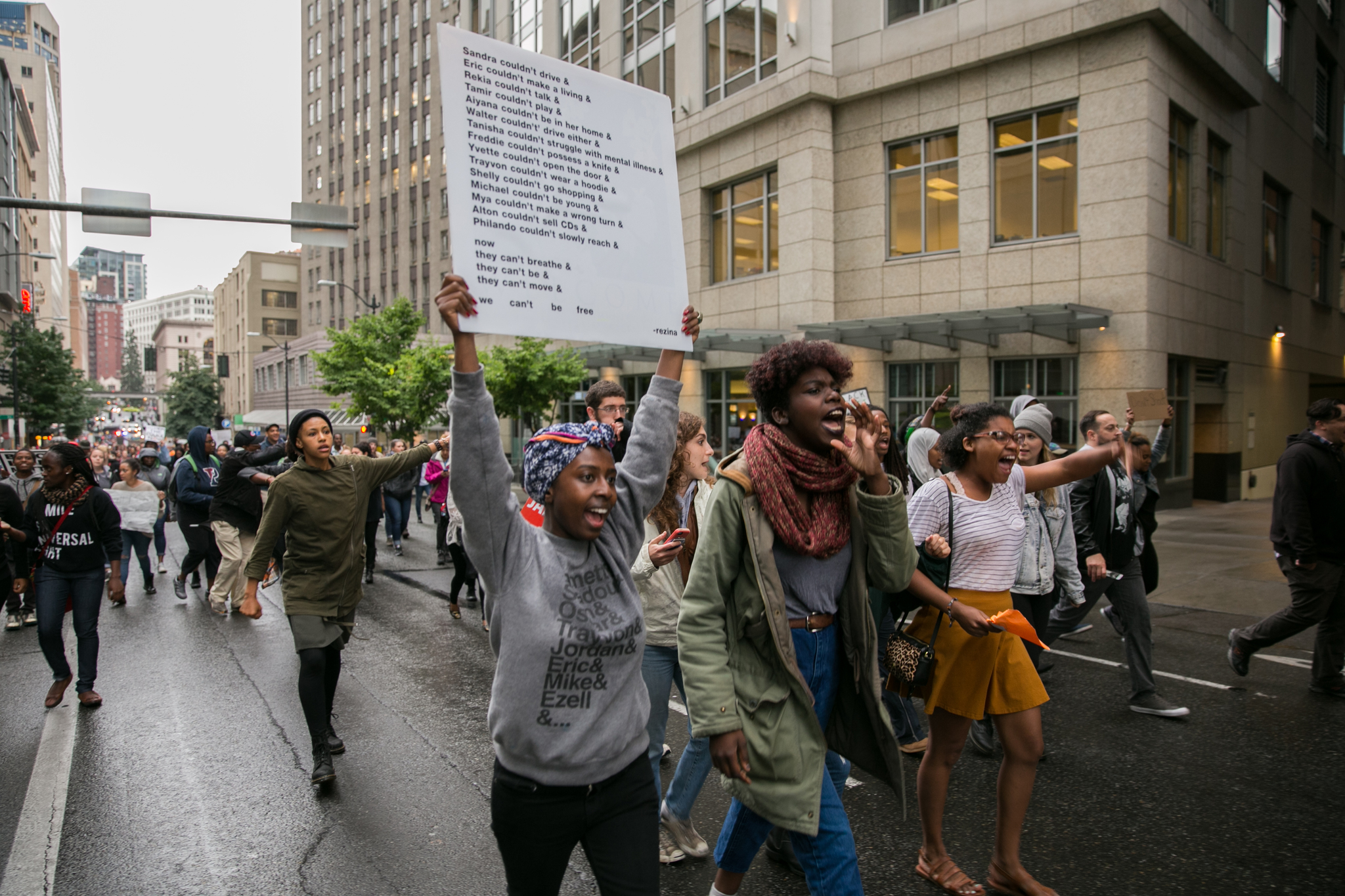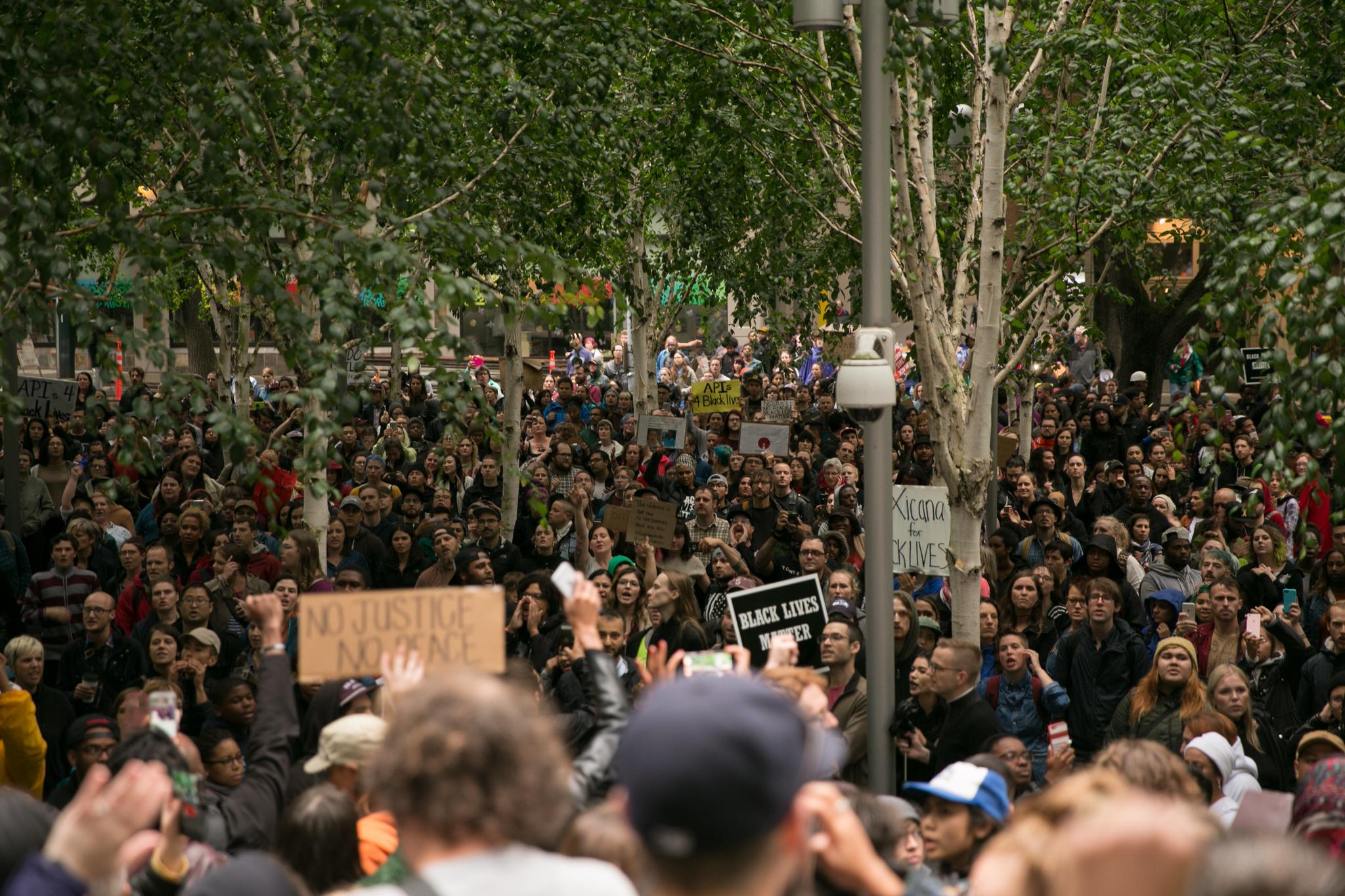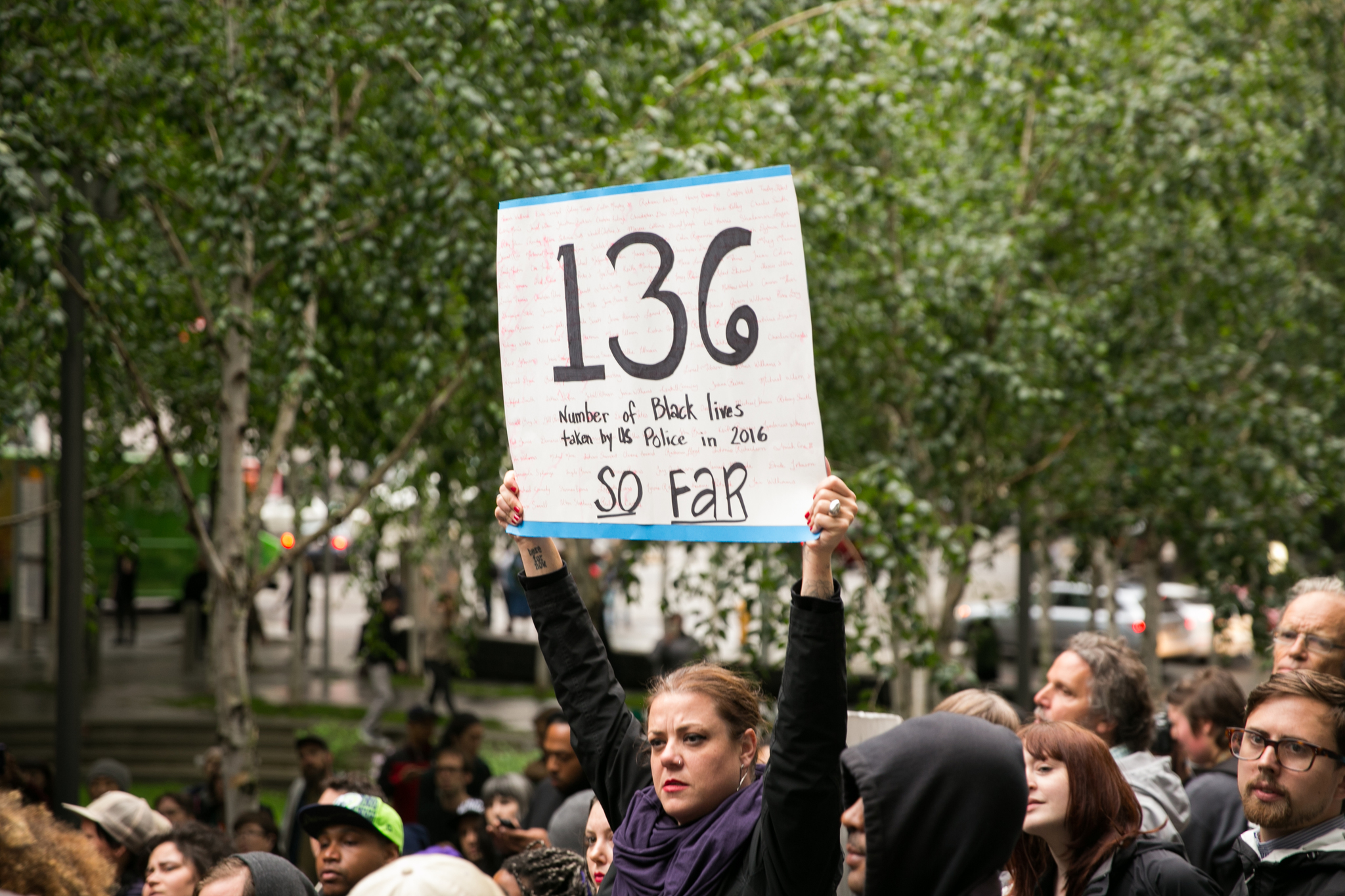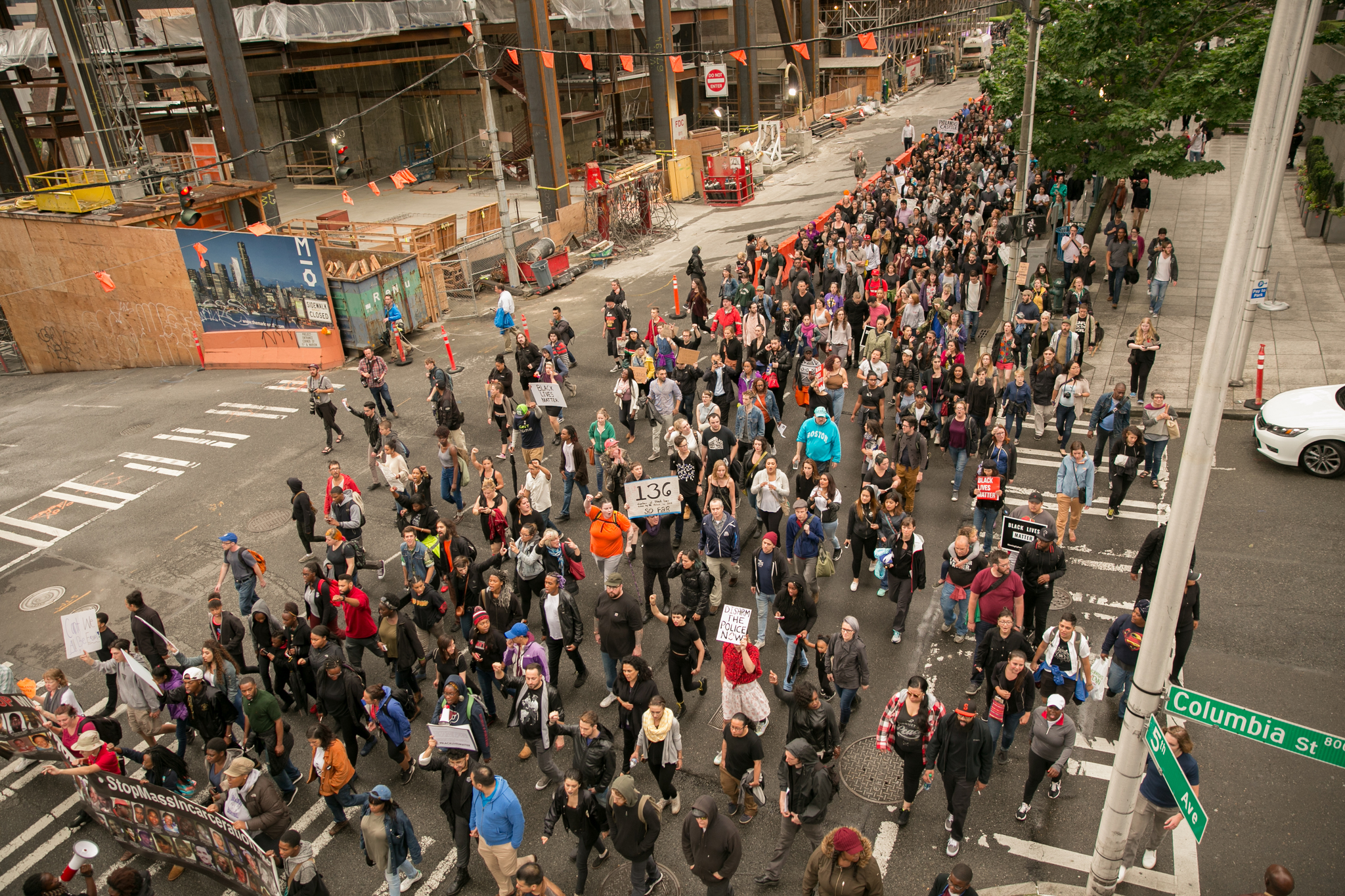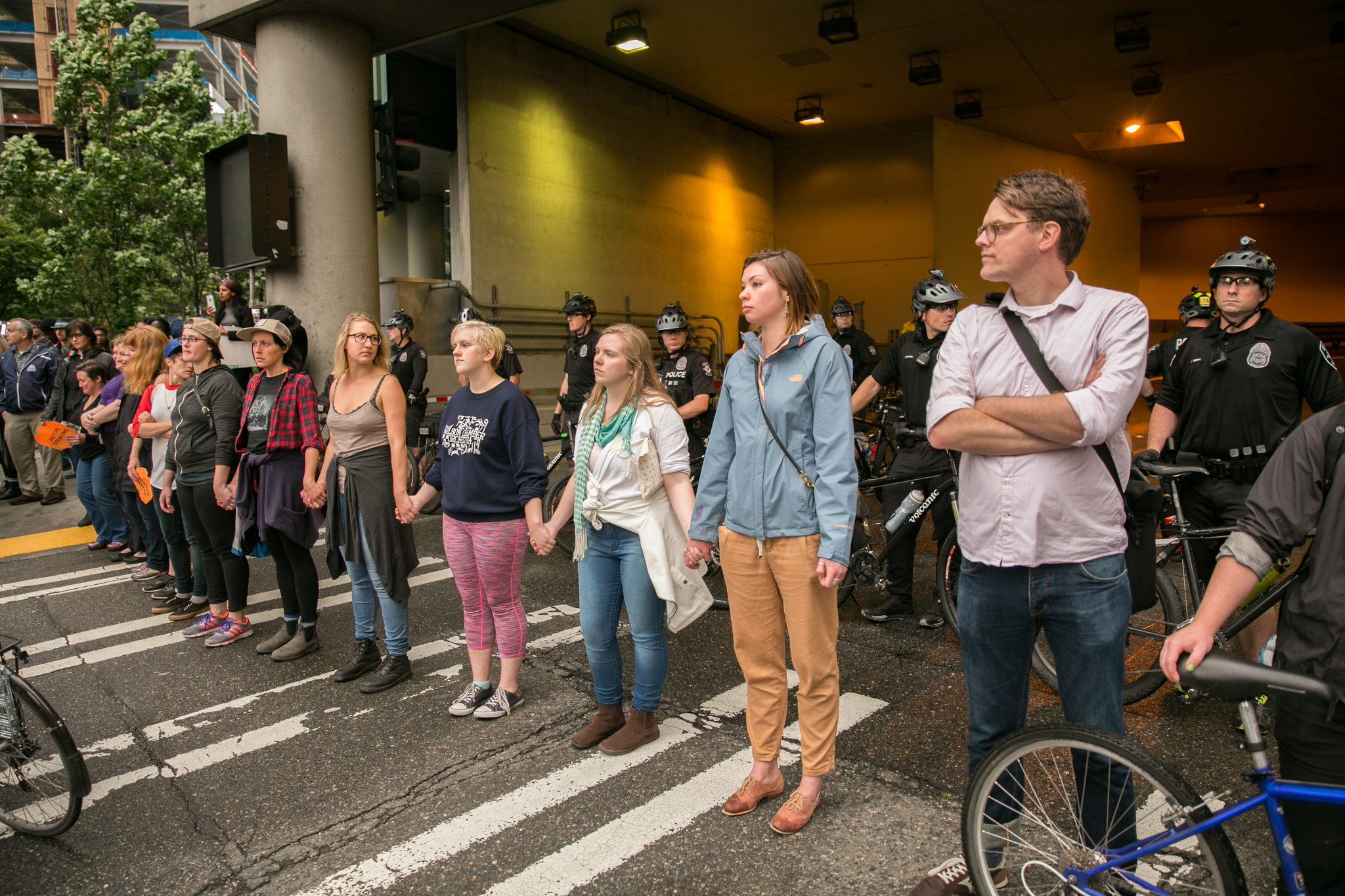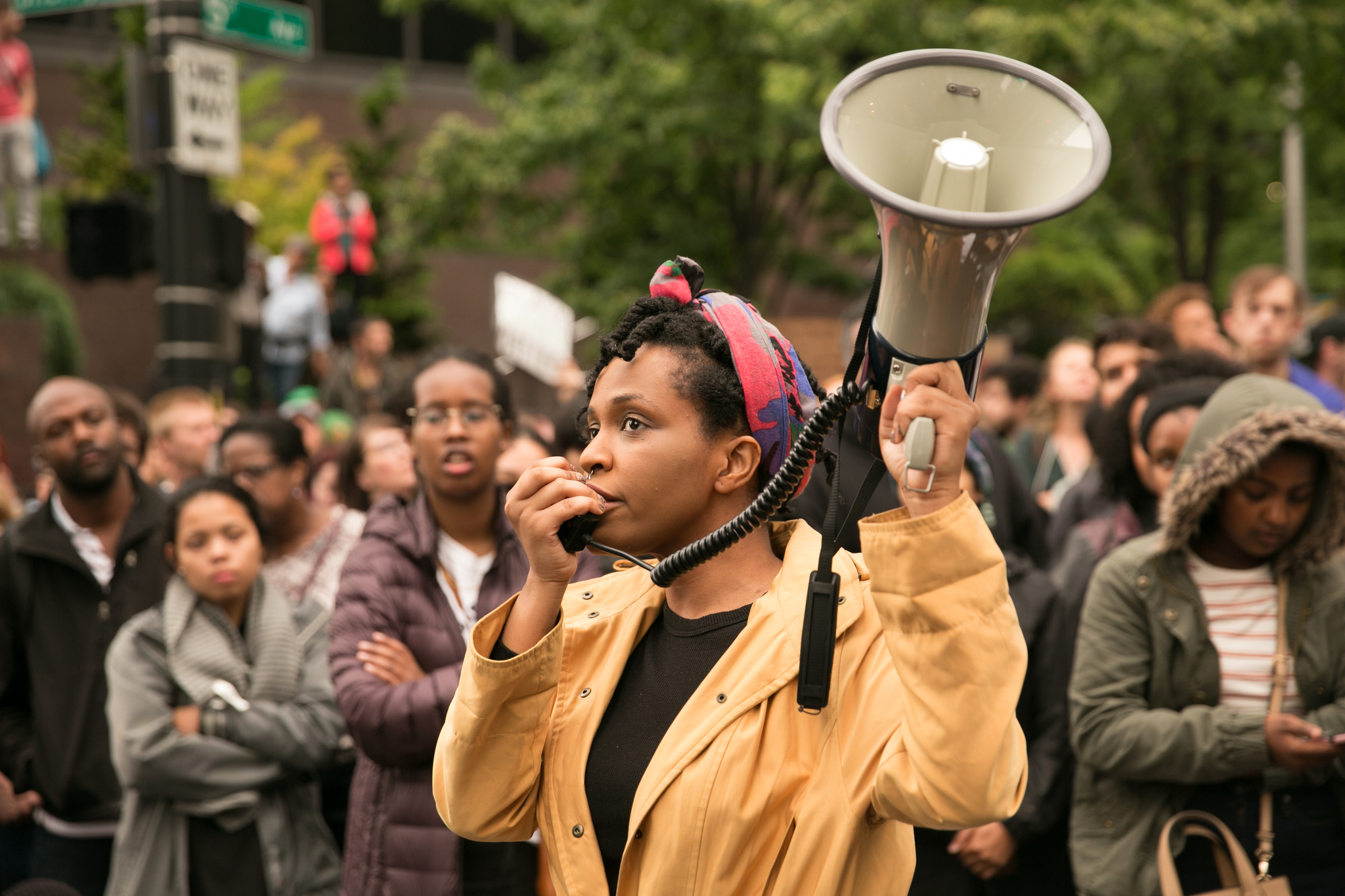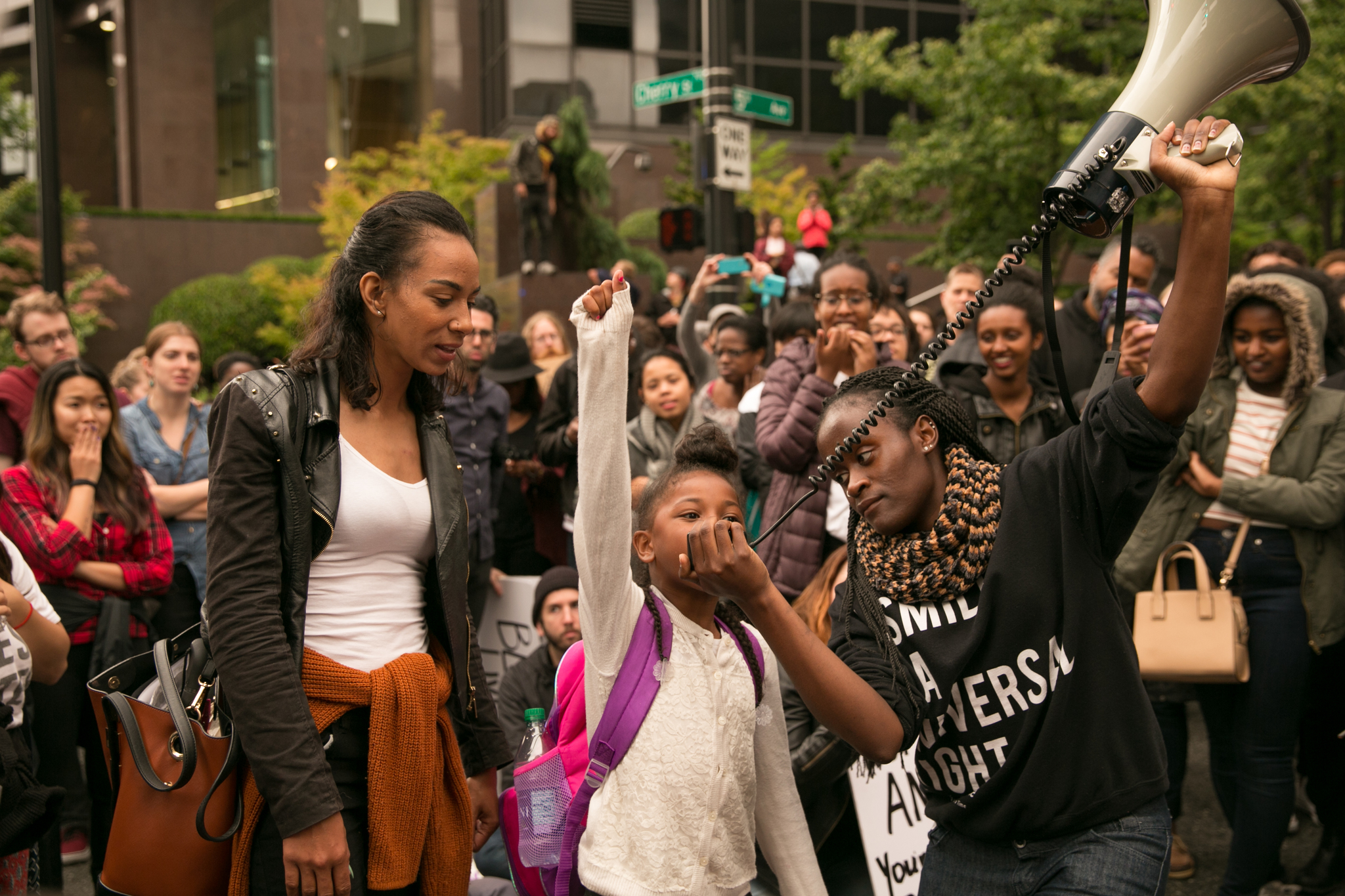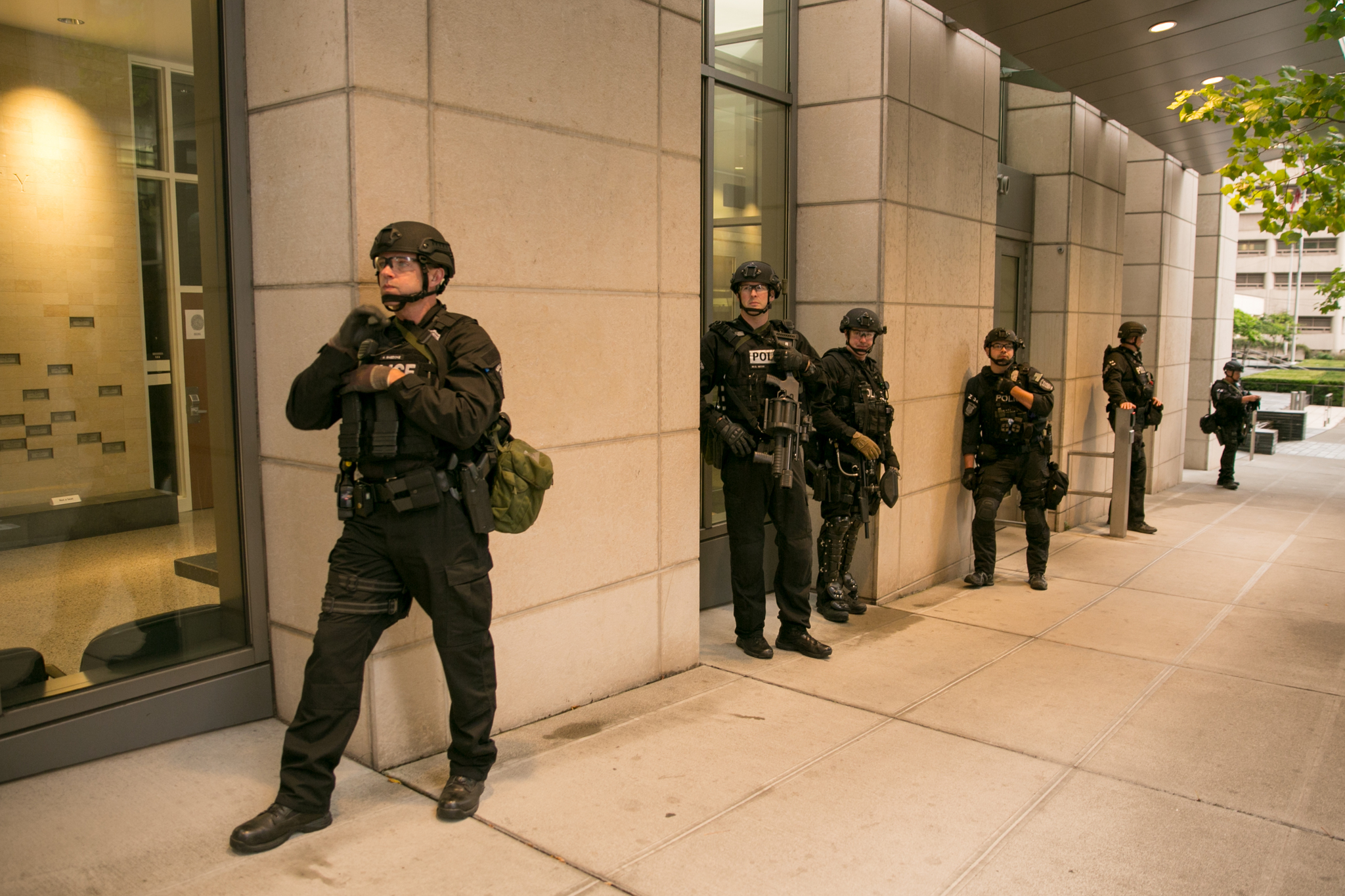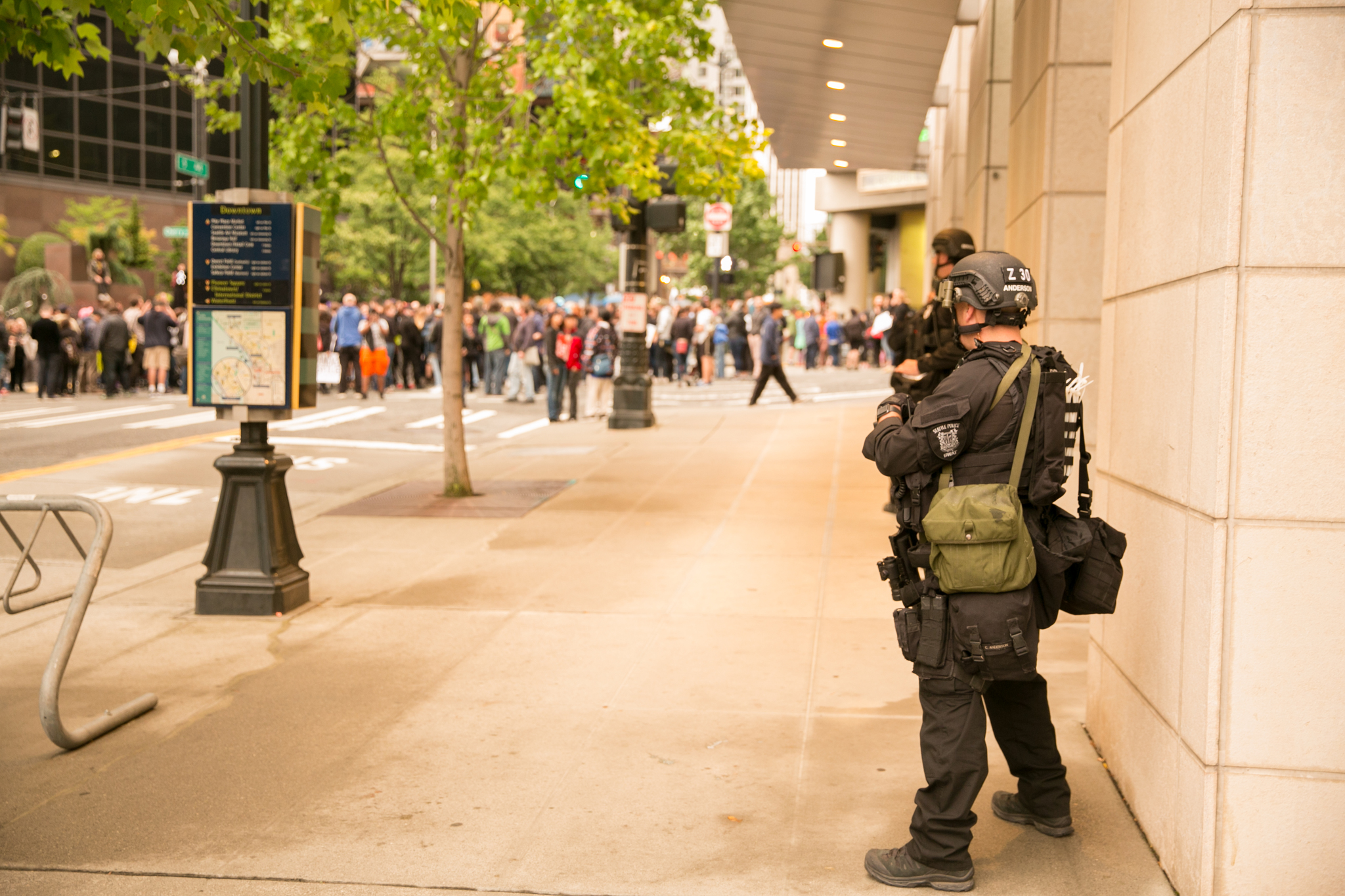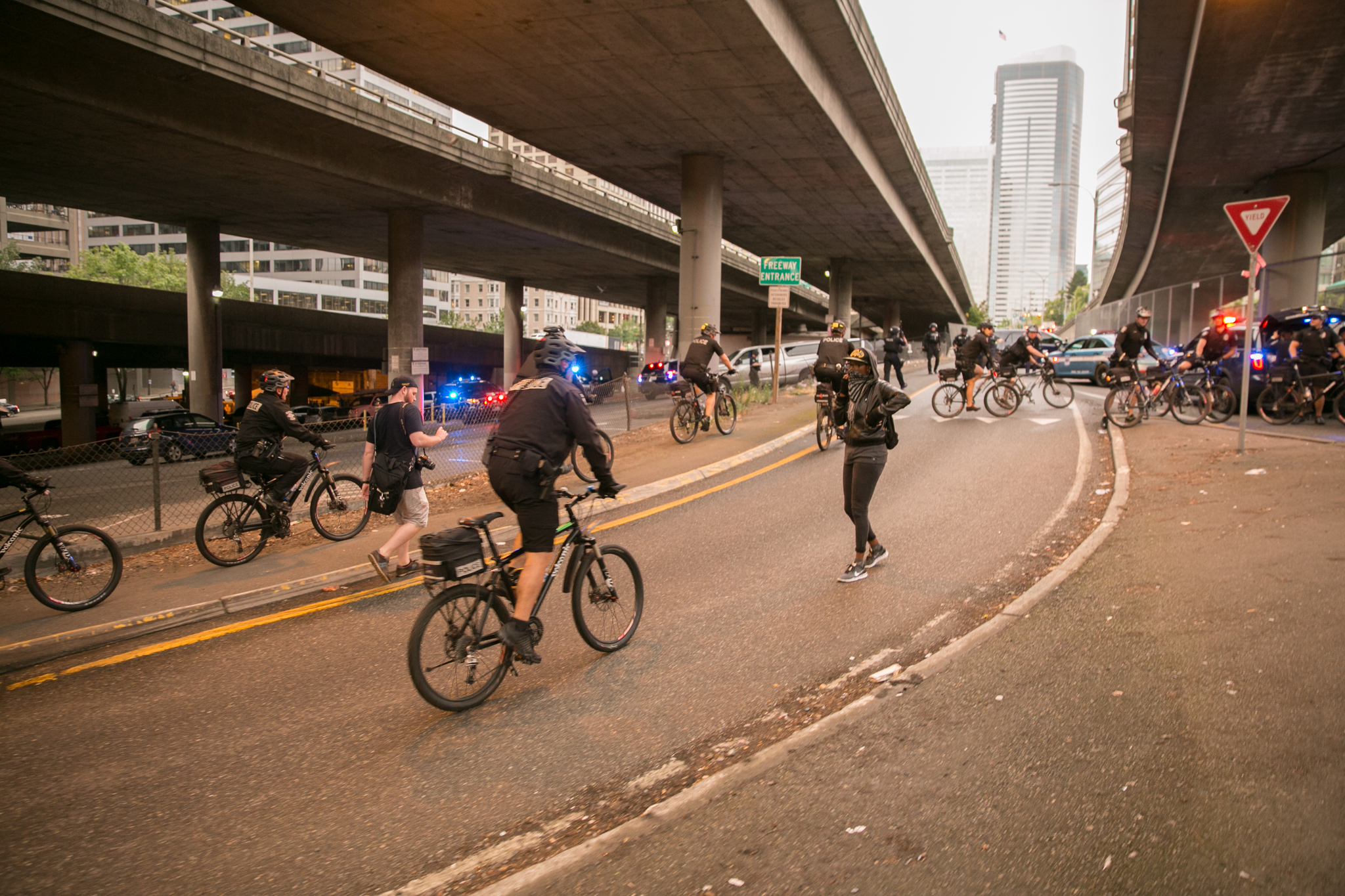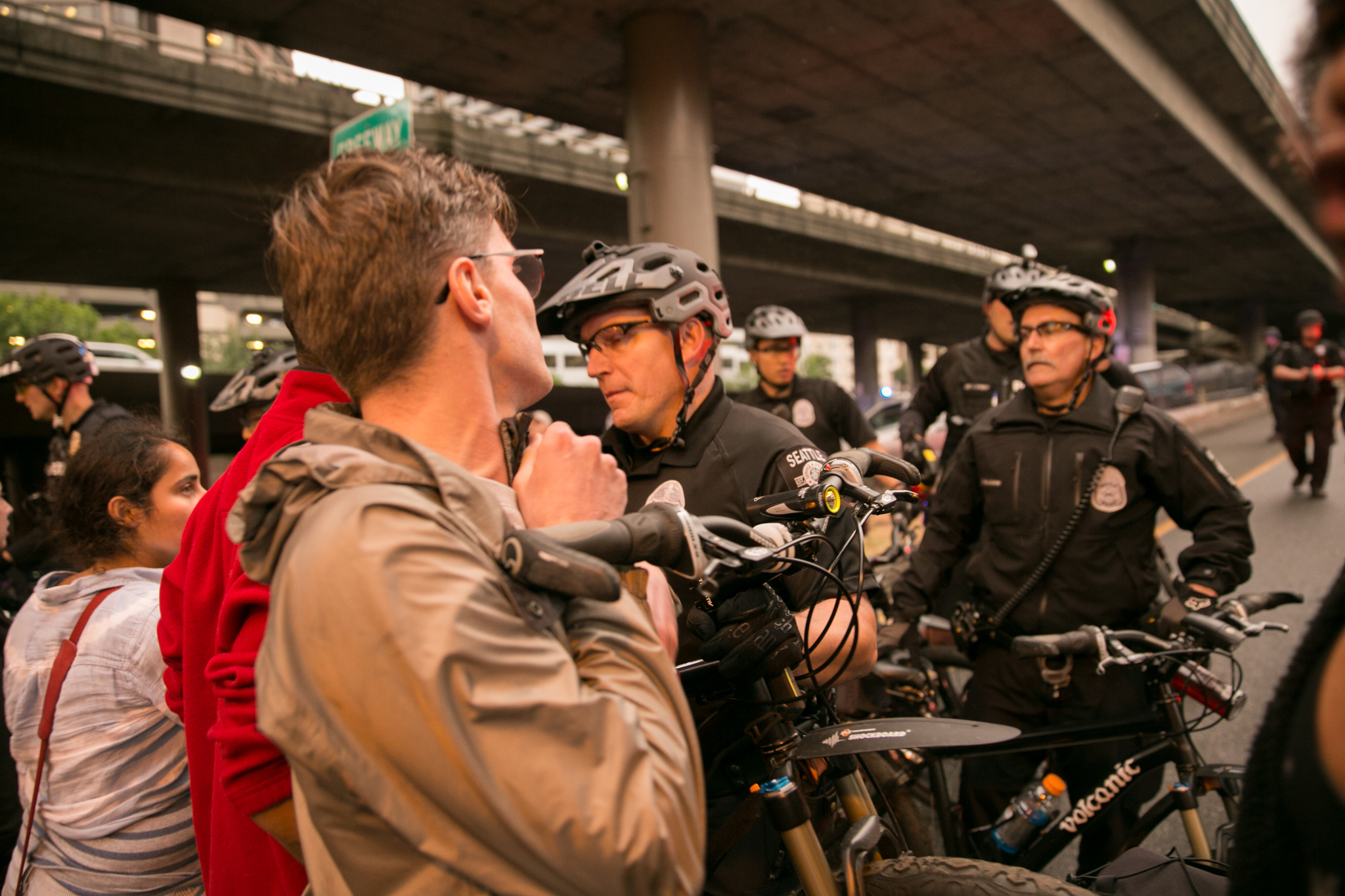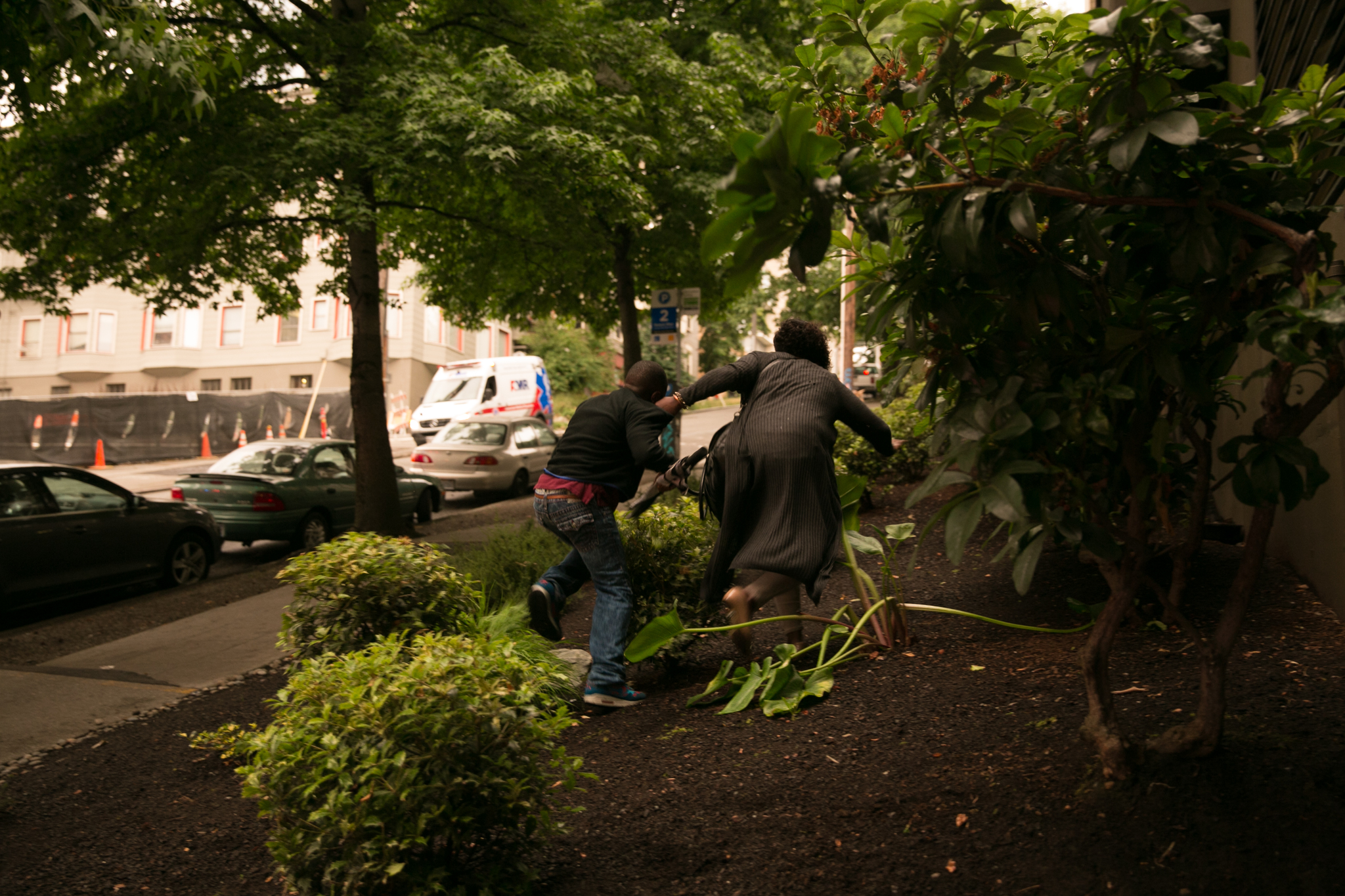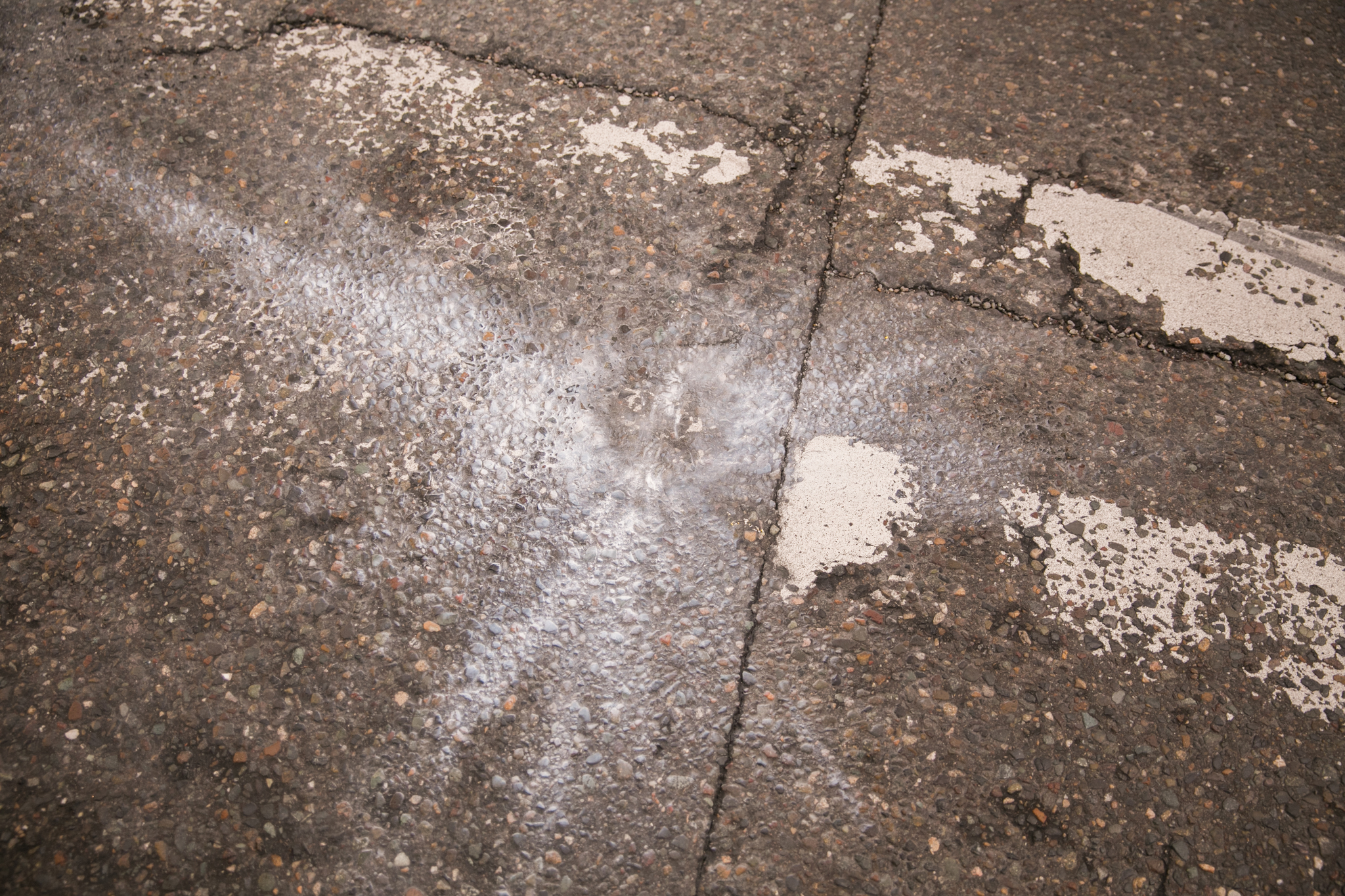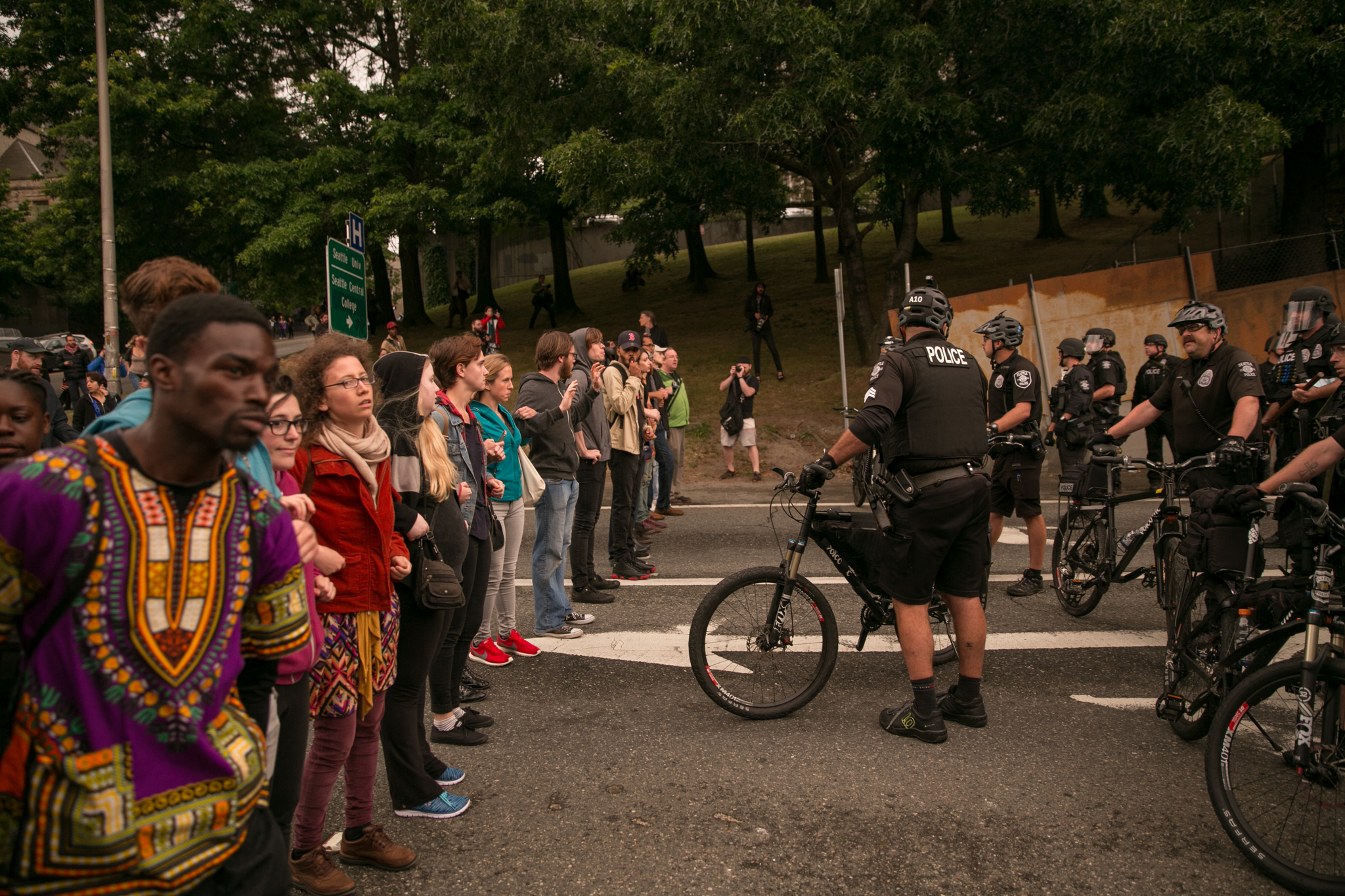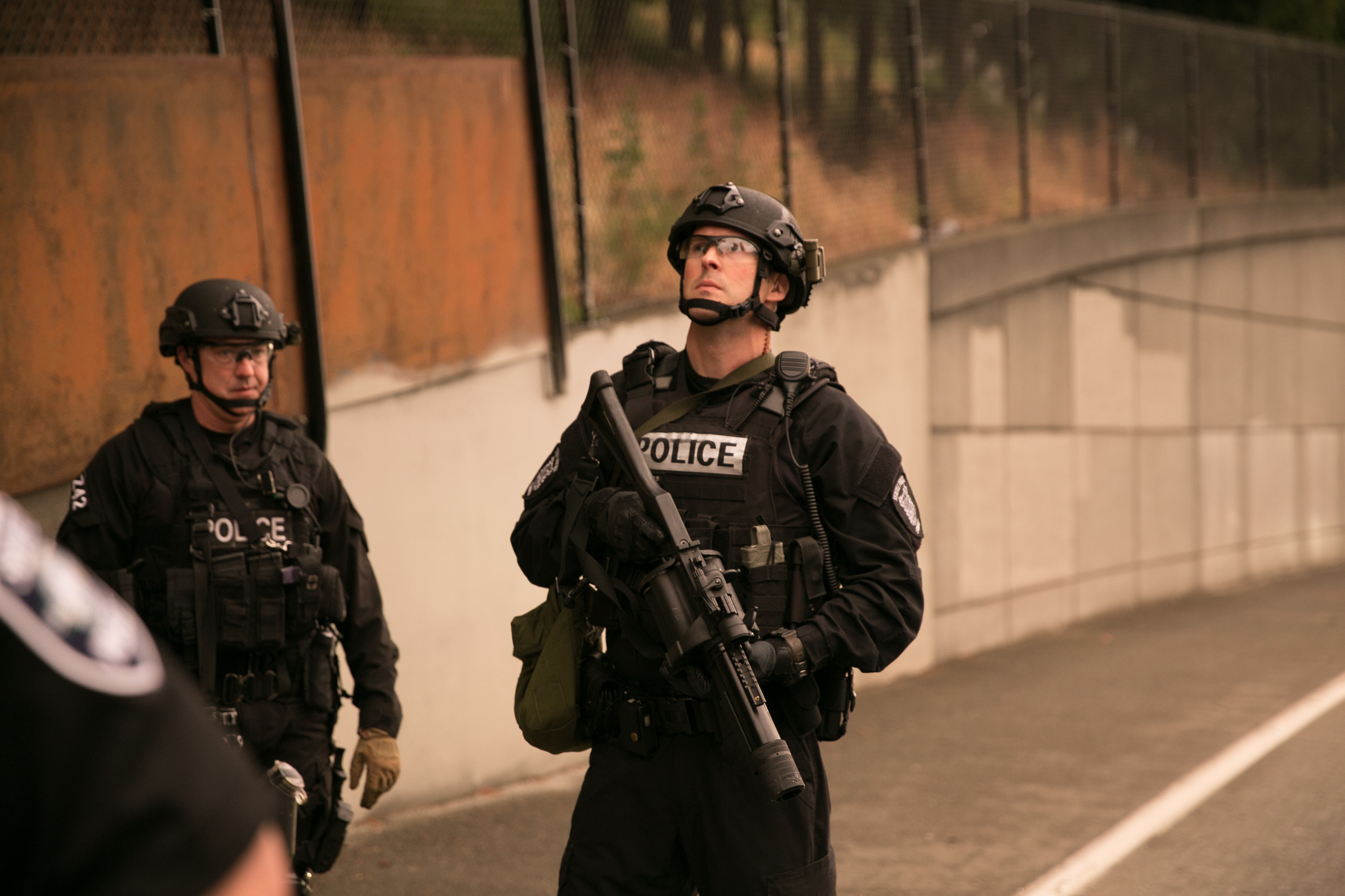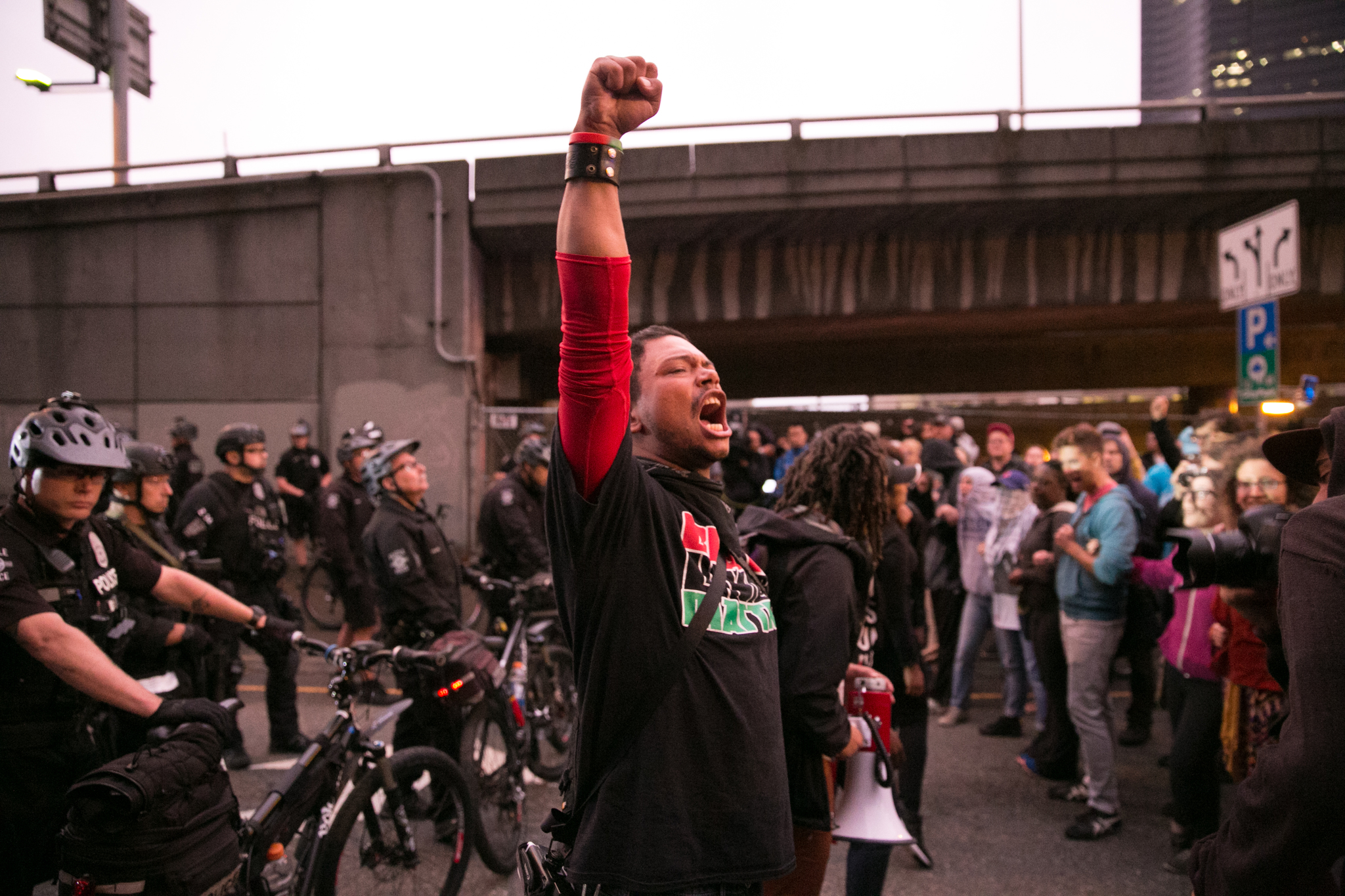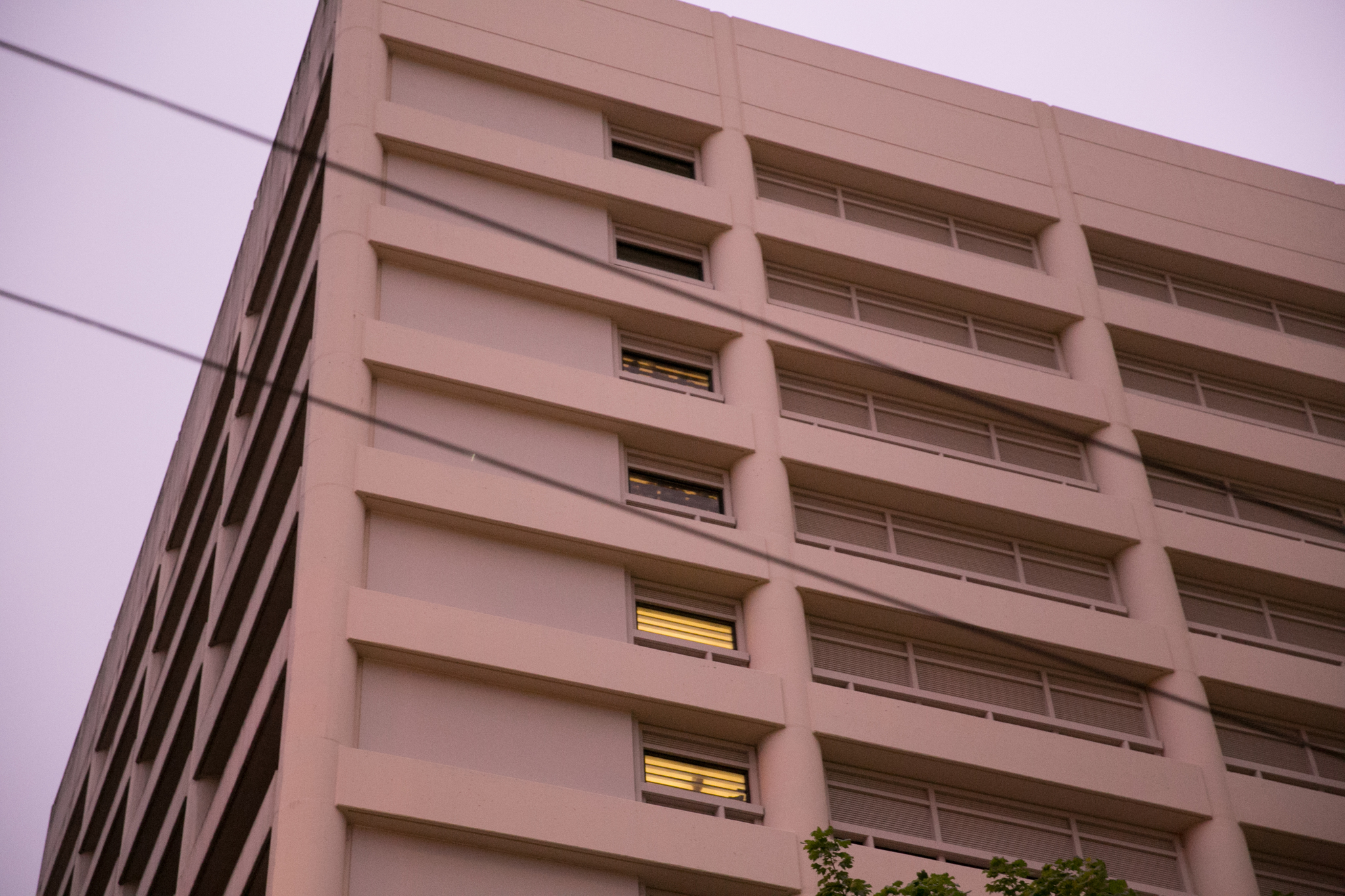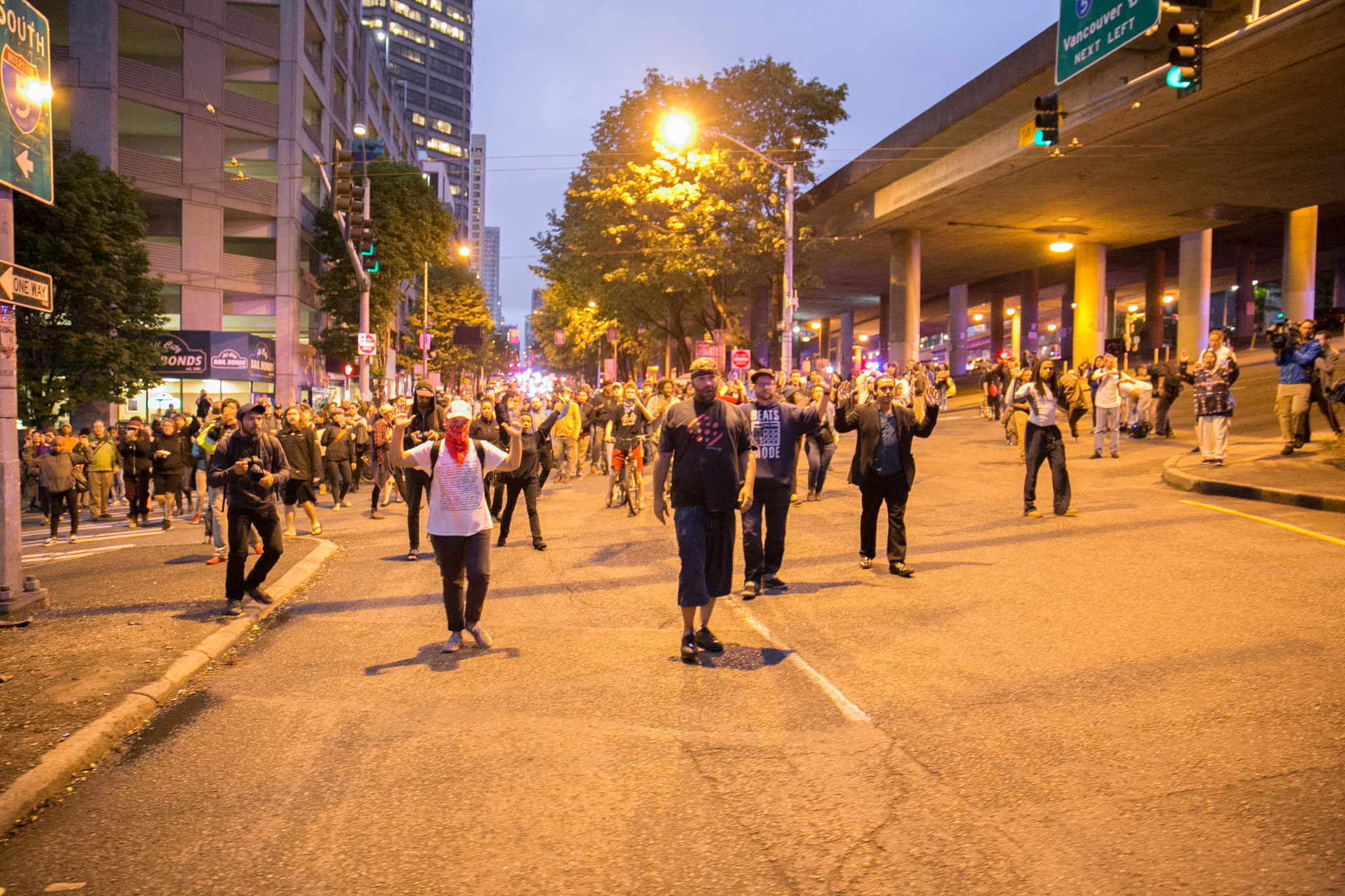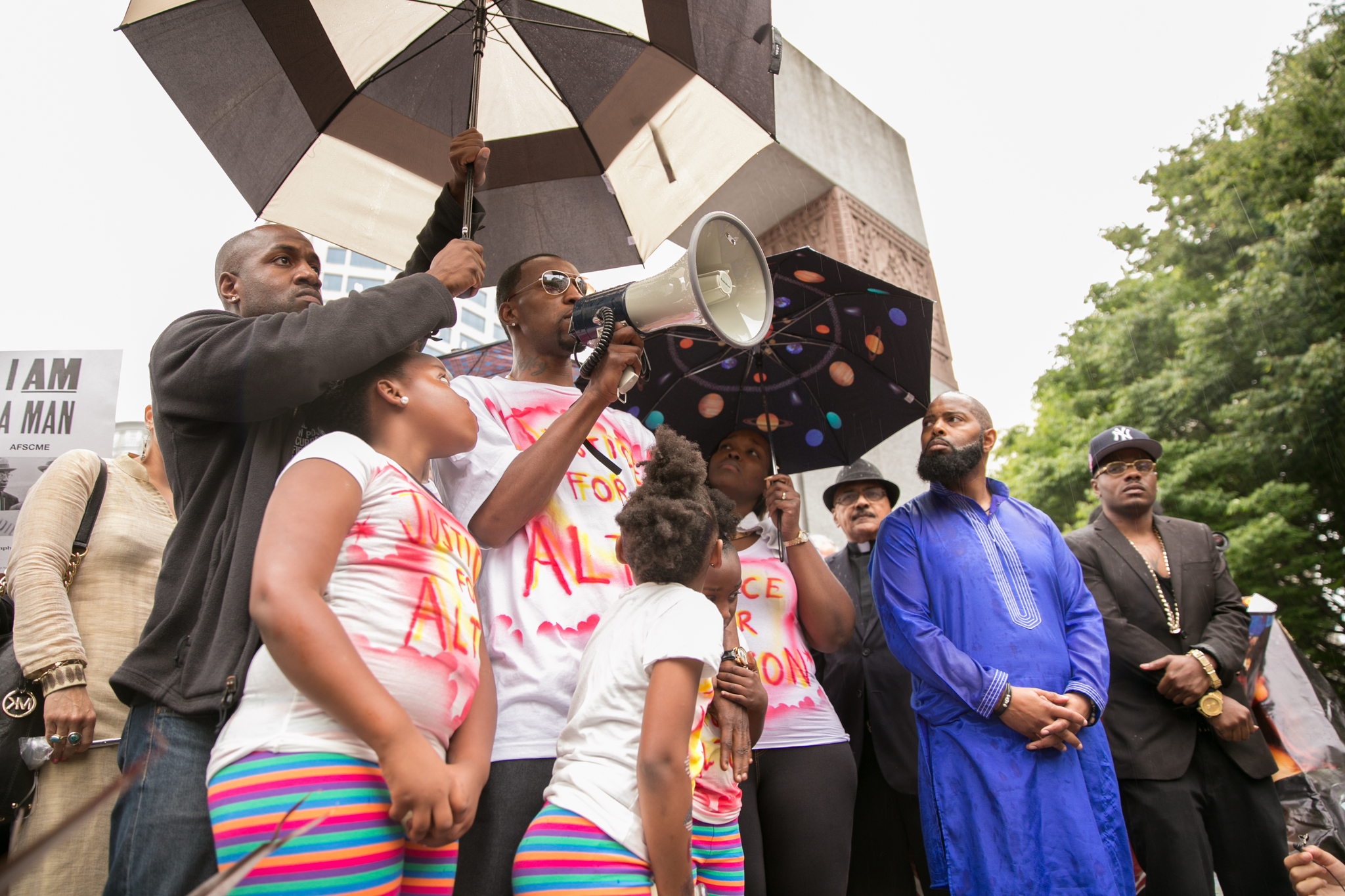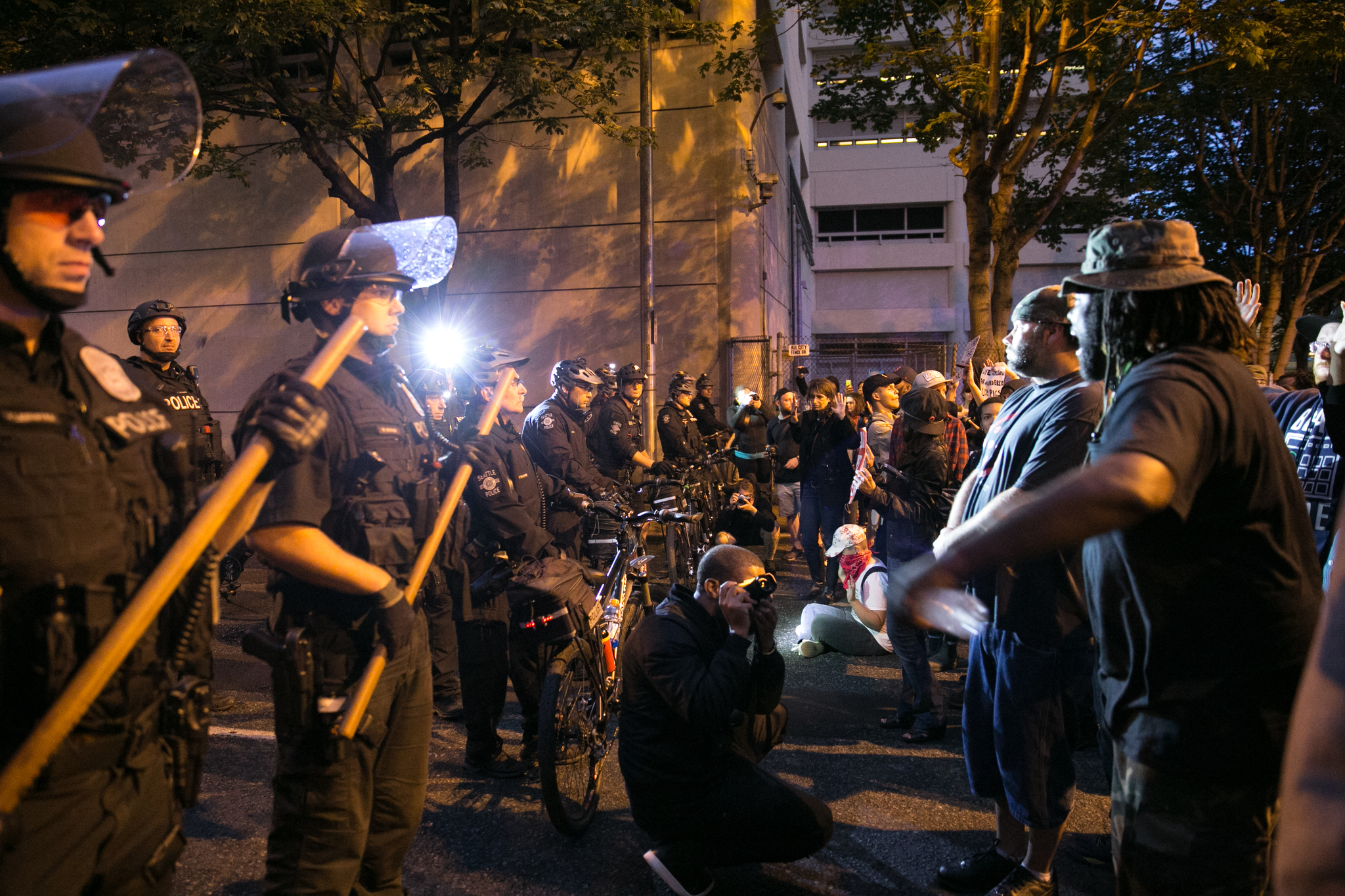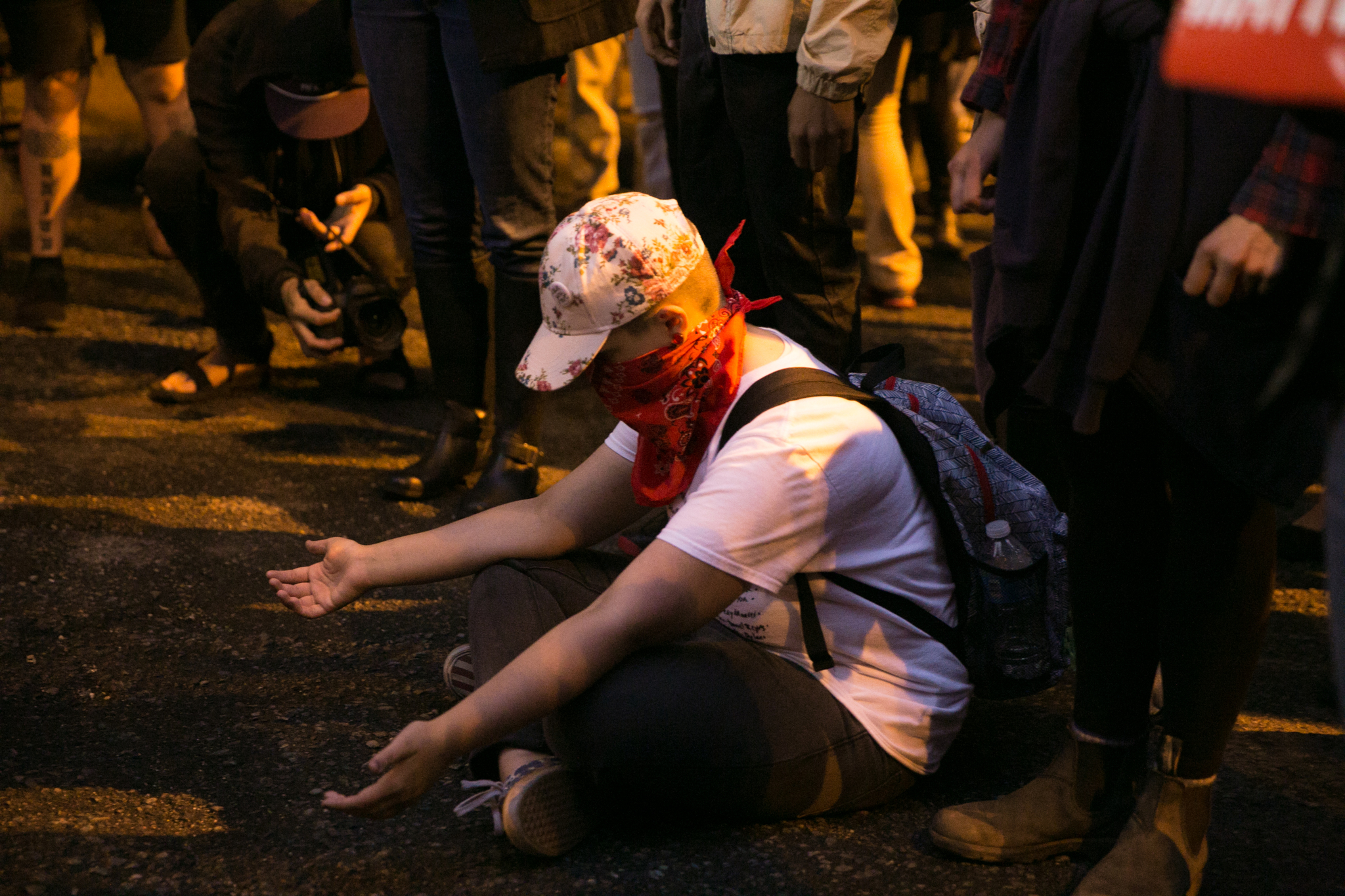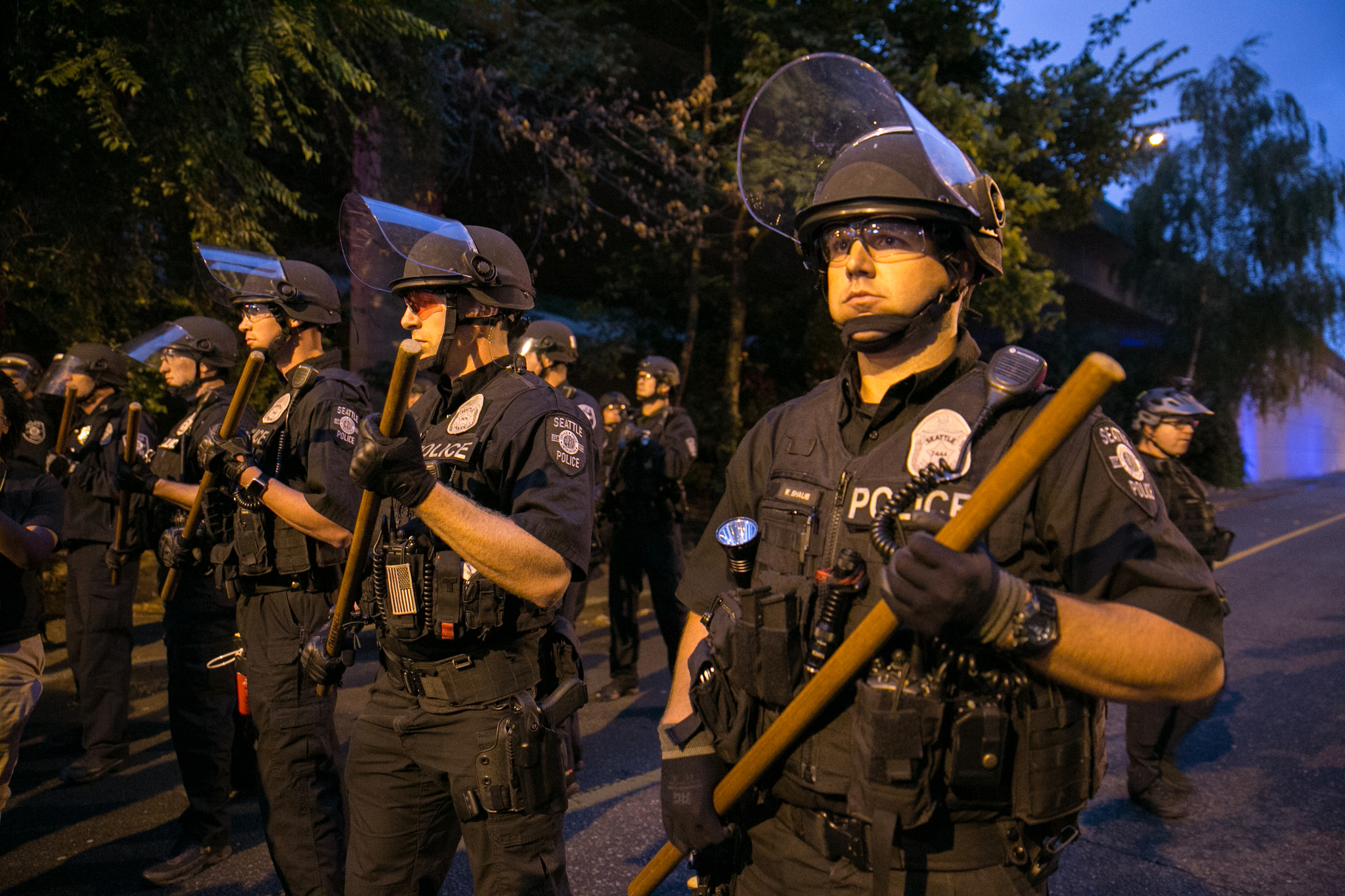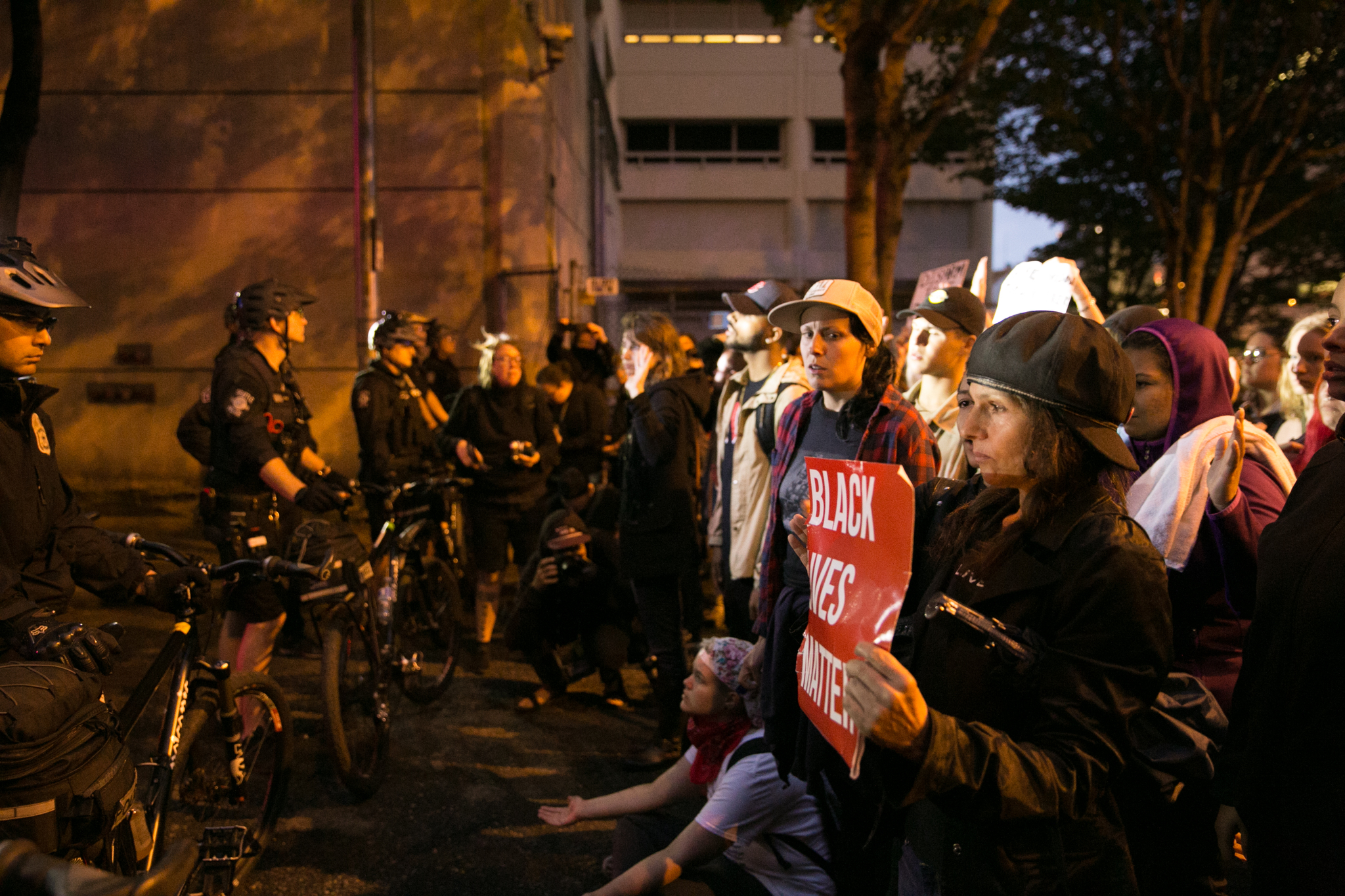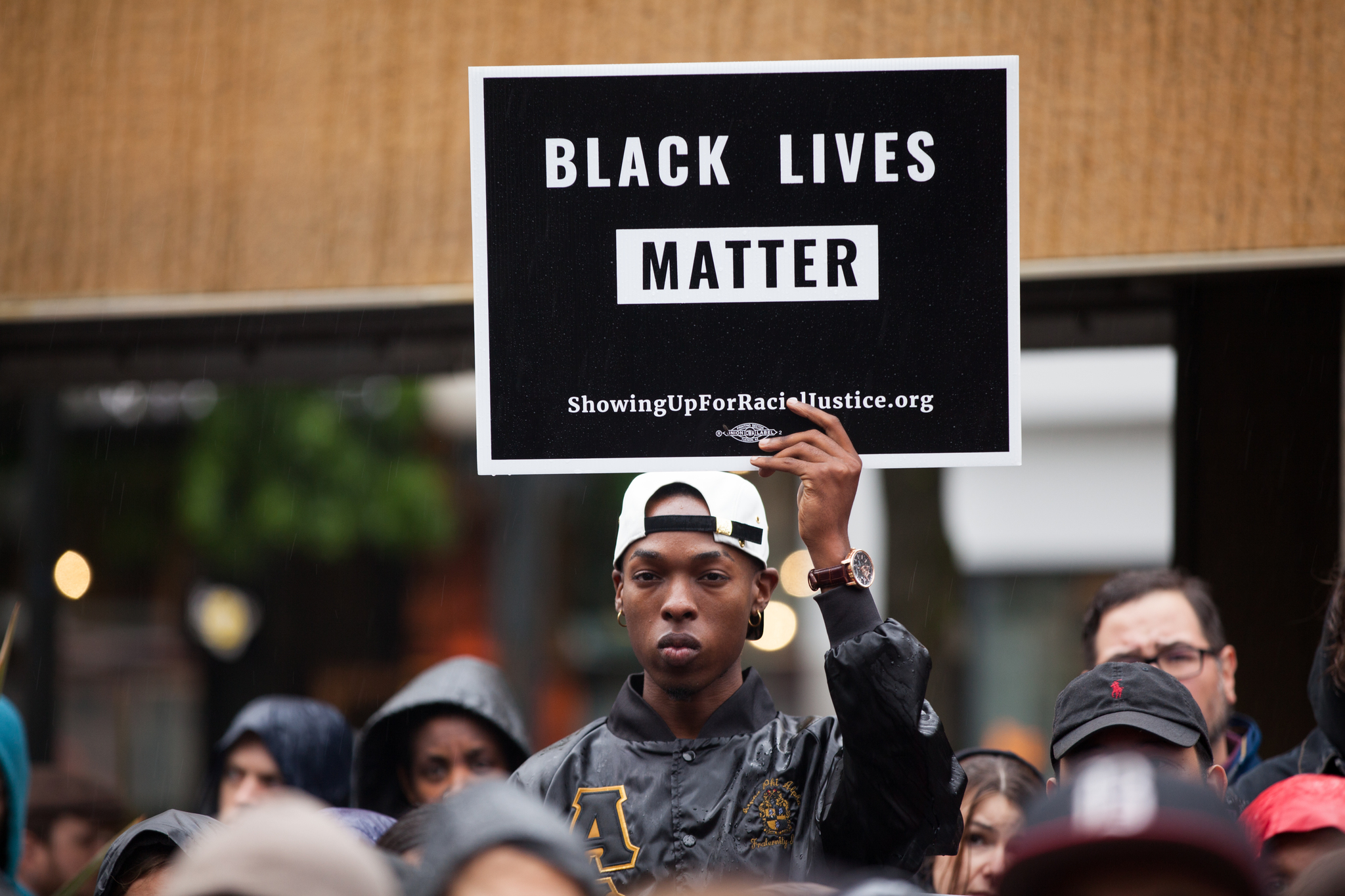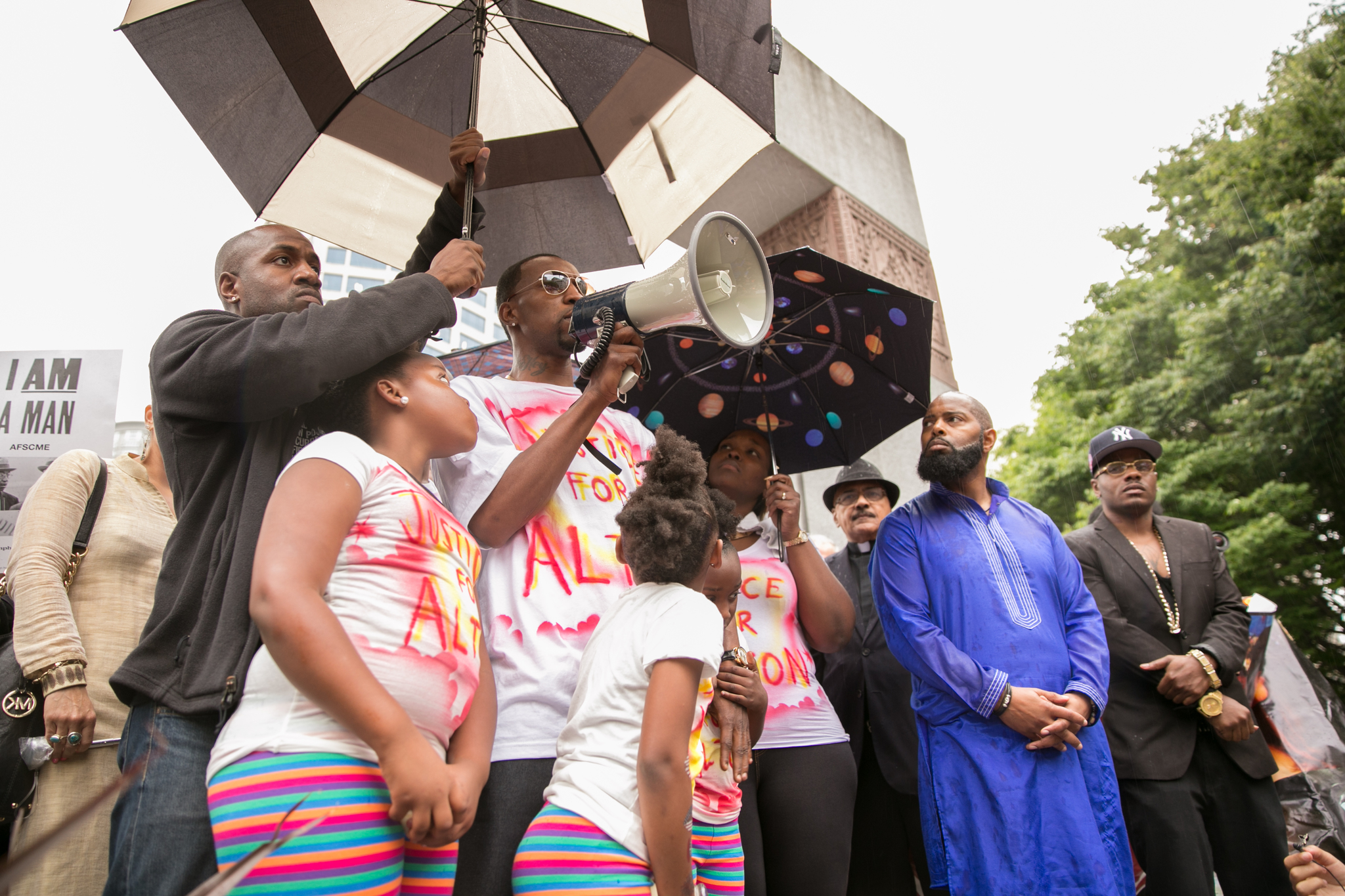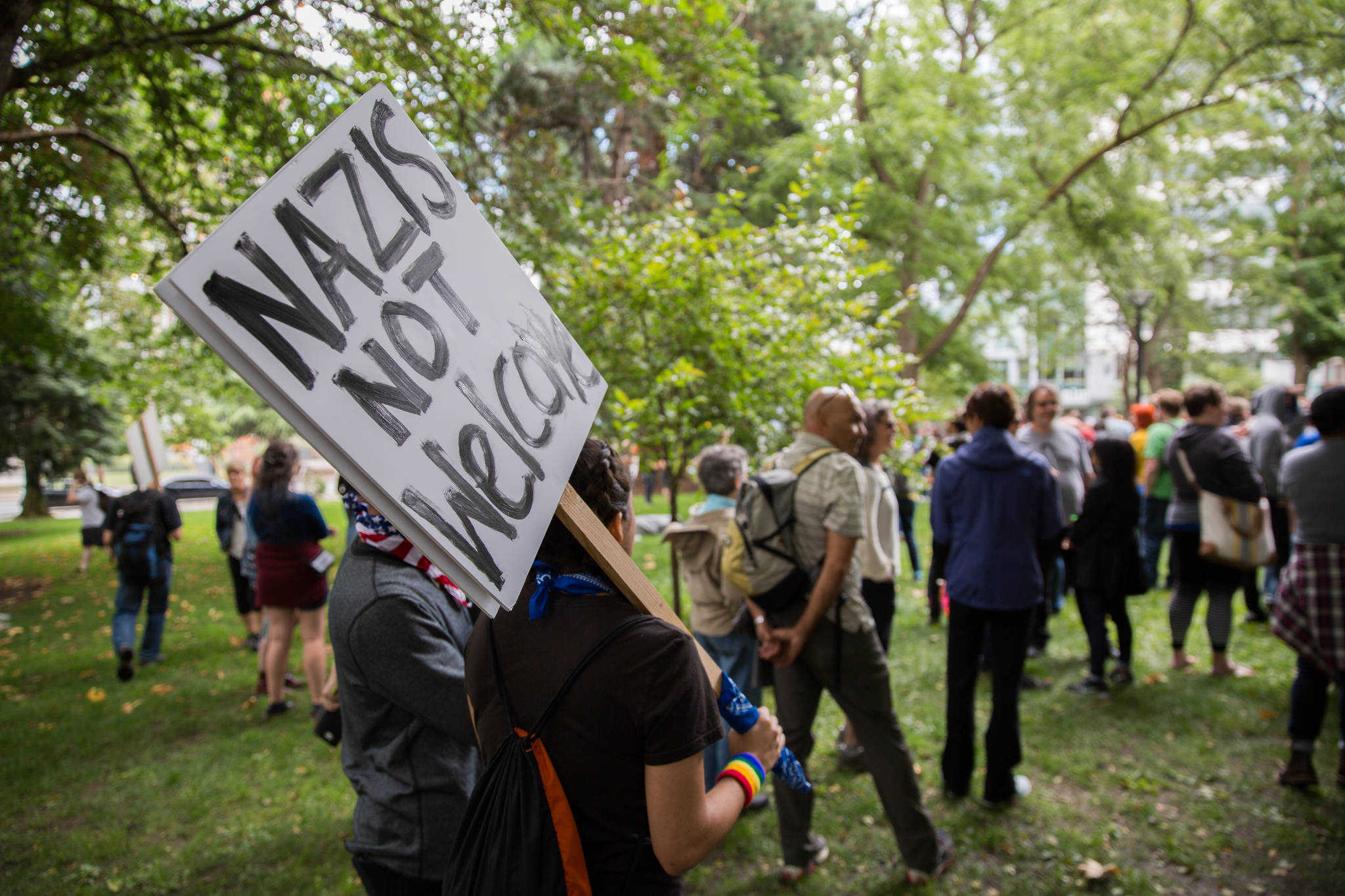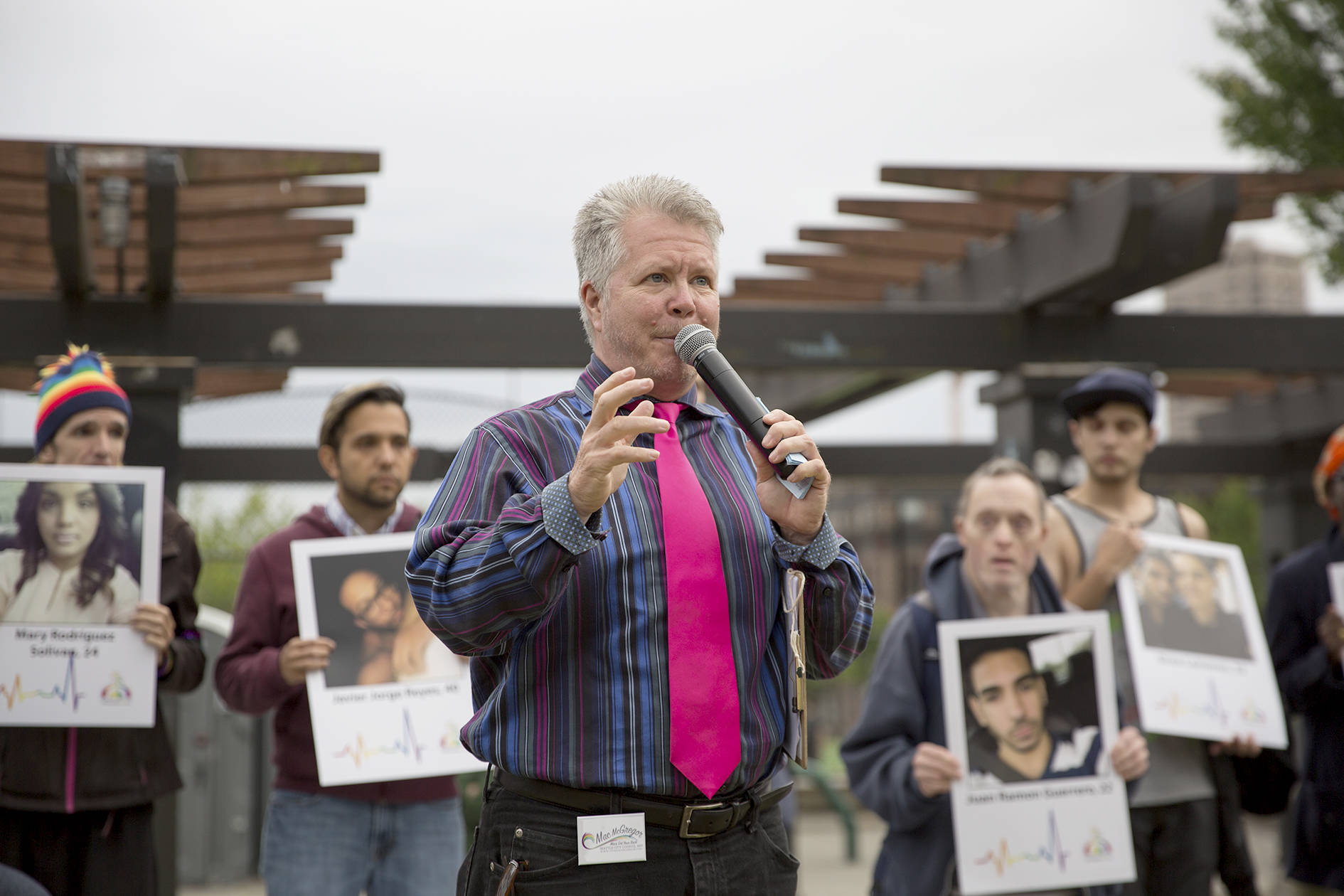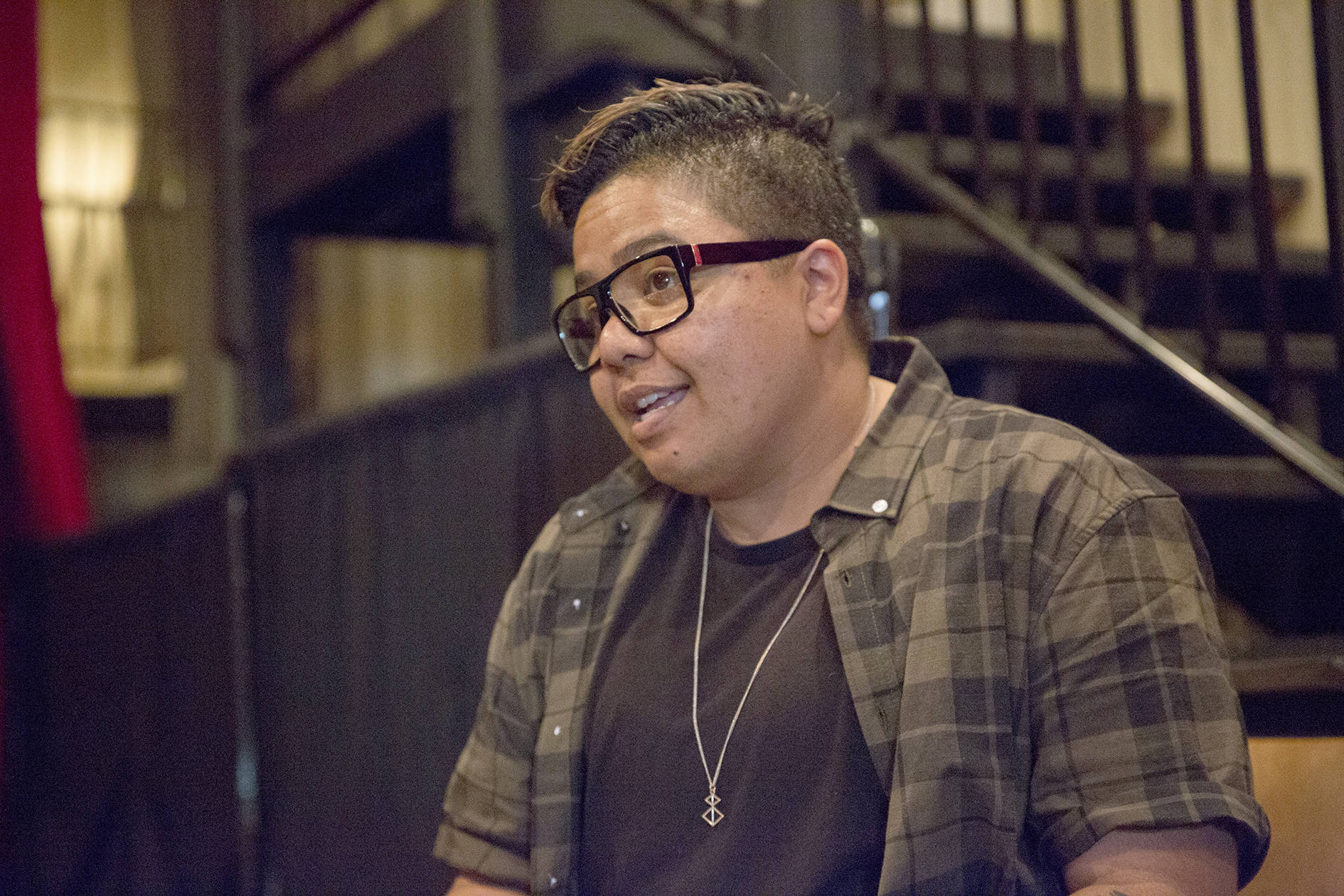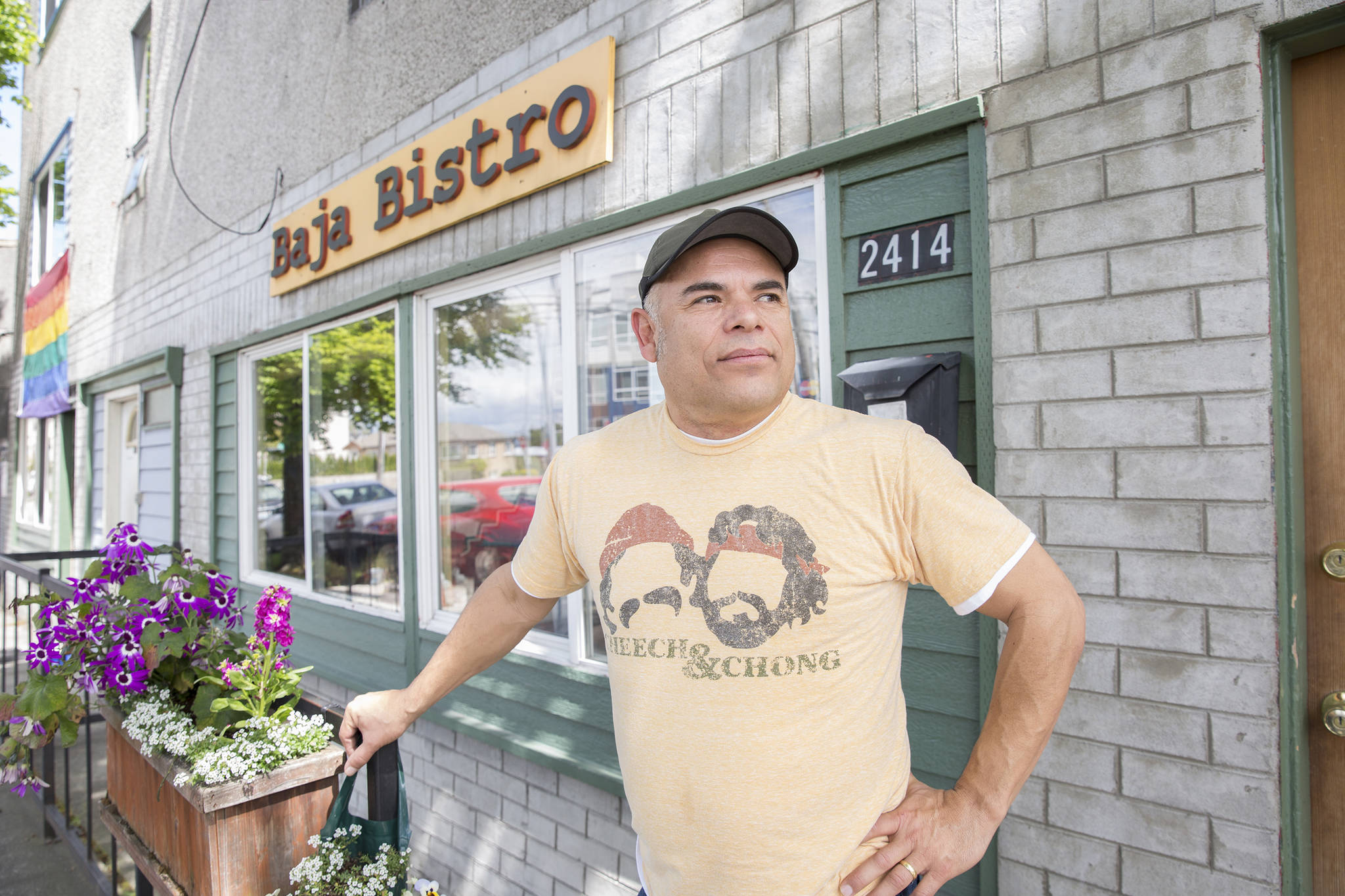The streets of Seattle were filling with angry voices. Despite the rain, despite the fear, despite the real threat of violence, people continued to find solace in chanting “Black Lives Matter” as they walked through the streets of downtown. Their voices echoed against the steel, concrete, and glass walls as they demanded respect for their lives.
The deaths of black men Alton Sterling in Louisiana and Philando Castile in Minnesota at the hands of police officers were fresh in the minds of those gathering to remember their names at a vigil in Westlake Park. Nearly 1,000 people stood in the rain as Andre Taylor spoke on the importance of police reform. Taylor, whose brother Che Taylor was shot and killed by Seattle Police four months ago, is leading an initiative effort to change state law to make it easier to bring charges against police officers who kill civilians.
“The mayor has endorsed our initiative. This initiative is not anti-police, it is pro community. Oversight for all people is necessary. We’re offering healing for the community. We’re offering an opportunity for Washington state to set the standard. This initiative is the first of it’s kind,” Taylor told me before the event. “There was something in me that felt it was necessary to come out here to the people and be an example of how we move forward, even in my own pain, my own struggle. To show them that you can recover. The frustration, the violence, the anger, comes from having tried everything you know to do and having no changes. We’re bringing a resolution that is real. We can do something about it. That brings hope, it quells anger.”
Taylor started a non-profit called Not This Time after the death of his brother, to help pass Initiative 873—which would remove “state of mind” language from state law that makes it impossible to charge a police officer with murder if you can’t prove he or she acted with malice. Because someone’s state of mind of extremely difficult to prove, police officers are essentially immune from prosecution. The measure needs 250,000 signatures by the end of the year to go to the legislature for consideration; if the legislature does not make the initiative law, it would then go to voters.
Additional speakers included Seattle Black clergy, who urged Seattle to stand up against police brutality, while Alton Sterling’s first cousin spoke to the crowd and thanked them for coming out and supporting the family. Rick Williams, the brother of John T. Williams who was killed in 2010 by the Seattle Police Department for carrying a small knife he used for tradition woodcarving, called for “unity” from all people.
Some in the crowd were not as interested in police reform as Andre Taylor. Voices in the crowd spoke out against working within the system. Those voices eventually grew and a protest formed, splitting from the vigil and taking to the street, blocking traffic at Fourth and Pine. The initial demonstration grew until the 1,000 people at Westlake Park were marching to the Federal Courthouse. Chants of “No justice, no peace” reverberated through downtown streets. On arrival at the Federal Courthouse, activist Palca Shibale spoke to the crowd. “Every single day we wake up in the country as black people and we struggle because of the color of our skin. I have a message for all the white allies who are here today. It is important that you understand the power of your white privilege. If you are silent or neutral in the middle of black genocide, then you are complacent in the system. Your silence will not save me. Your silence will not save my people. Your silence is killing us.”
The protest then moved through downtown to SPD headquarters on Fifth. Fletcher Bailey, a young, 22-year-old black man spoke about the message of the demonstration, “We stand for a solution, even if we don’t know what that solution is. We want to make noise where other people won’t. We’re being oppressed, we have to stand up against it. I feel helpless because the justice system tells me that they have a license to kill me dead in the street.” Demonstrators formed a circle in the intersection blocking the streets and allowing people to speak on the megaphone. The activists centered women and people of color, even making space for children to speak.
A speaker suggested people take the highway, and as the crowd moved that direction, Seattle police in riot gear began forming a line at the Northbound entrance to I-5 at Cherry. The demonstration then turned around and began moving the other direction. Police in riot gear pursued the protest, lobbing two “blast balls” into the crowd, causing at least one mother to run from the march, fear in her eyes and pulling her young son along with her. As news of Dallas, where a sniper ambush at a previously peaceful black lives matter protest had left five police officers dead and six wounded, made it’s way through the crowd, the demonstration made it way to the King County Jail with messages of support like “we have not forgotten you” and “we love you.” Inmates could be seen waving to the crowd below. Seattle Police formed another line on Sixth Avenue, preventing the demonstration from moving South. After a brief stand off, the demonstration eventually moved back to Westlake before dissipating. No arrests were made.
